THE WANAMAKER ORGAN
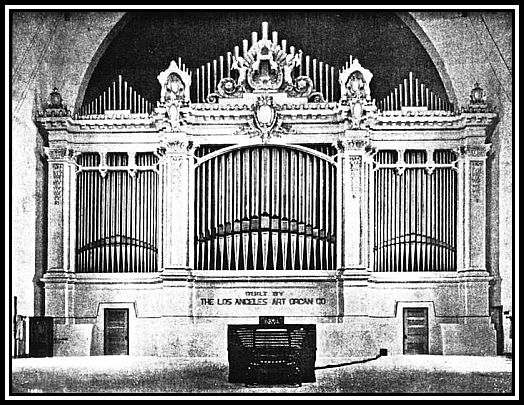 The Grand Concert Organ in Festival Hall of the St. Louis World’s Fair, 1904
The Grand Concert Organ in Festival Hall of the St. Louis World’s Fair, 1904
—ooOoo—
PART SIX:
THE FRIENDS WURLITZER ORGAN & ZORRO
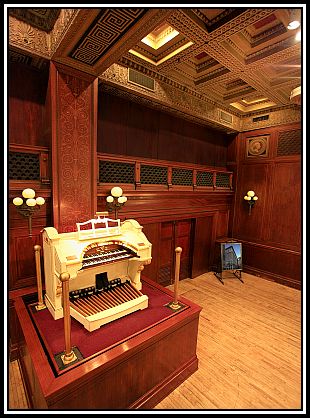 The Friends Wurlitzer Organ installed in Greek Hall
The Friends Wurlitzer Organ installed in Greek Hall
 Today, The Friends Wurlitzer Organ is installed in Greek Hall, which is a result of the hard work and dedication of Mr. Brantley A. Duddy.
Today, The Friends Wurlitzer Organ is installed in Greek Hall, which is a result of the hard work and dedication of Mr. Brantley A. Duddy.
Please allow me to add my thanks for his tireless efforts on behalf on all of us that has been lucky enough to hear it played.
-oOo-
PASSPORT PLEASE
In order to gain access to the Grand Evening Concert and also not to be charged for the afternoon Pops Concert and the screening of the silent film classic, Mark of Zorro (1920), featuring accompaniment by Tedde Gibson playing the Friends Wurlitzer, I had to collect my ticket. I had been given instructions on where to make my collection by a delightful lady at an Information Kiosk who also kindly gave me a card stating that I was eligible to a reduction should I purchase goods at R.H. Macy’s & Company that day.
Tickets were retrieved at the desks of The Friends of the Wanamaker Organ that had been set up in the atrium of the Grand Court just behind The Eagle. I joined the short line and once I gave my particulars, I was given my ticket, which was not your traditional ticket of paper, but was a yellow elastic bracelet, which I was required to wear and which was to act my Passport to the Concerts.
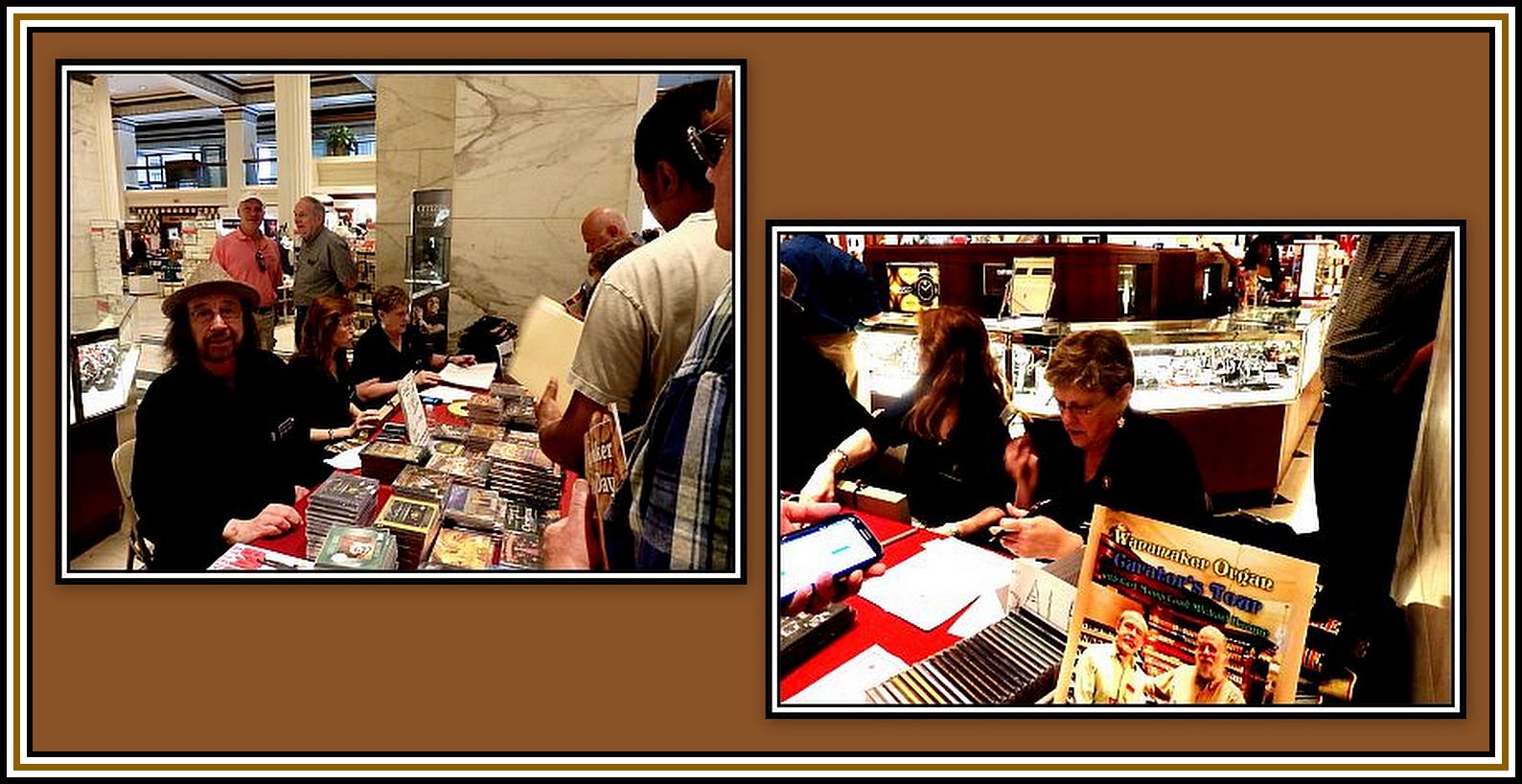 The Friends of the Wanamaker Organ Desks & Volunteers
The Friends of the Wanamaker Organ Desks & Volunteers
-oOo-
GREEK & EGYPTIAN HALLS
The Wanamaker Store in Philadelphia was built with two Special Purpose Halls: Greek and Egyptian Halls. Both were beautifully decorated Halls and were used as auditoria for concerts and also for retail purposes. Egyptian Hall was often used to display grand pianos and other up-market goods.
Greek Hall is found on the third floor of The Store and today is still a remarkably beautifully decorated area and still used as an auditorium while Egyptian Hall has been remodeled and part of it is now used as executive office space.
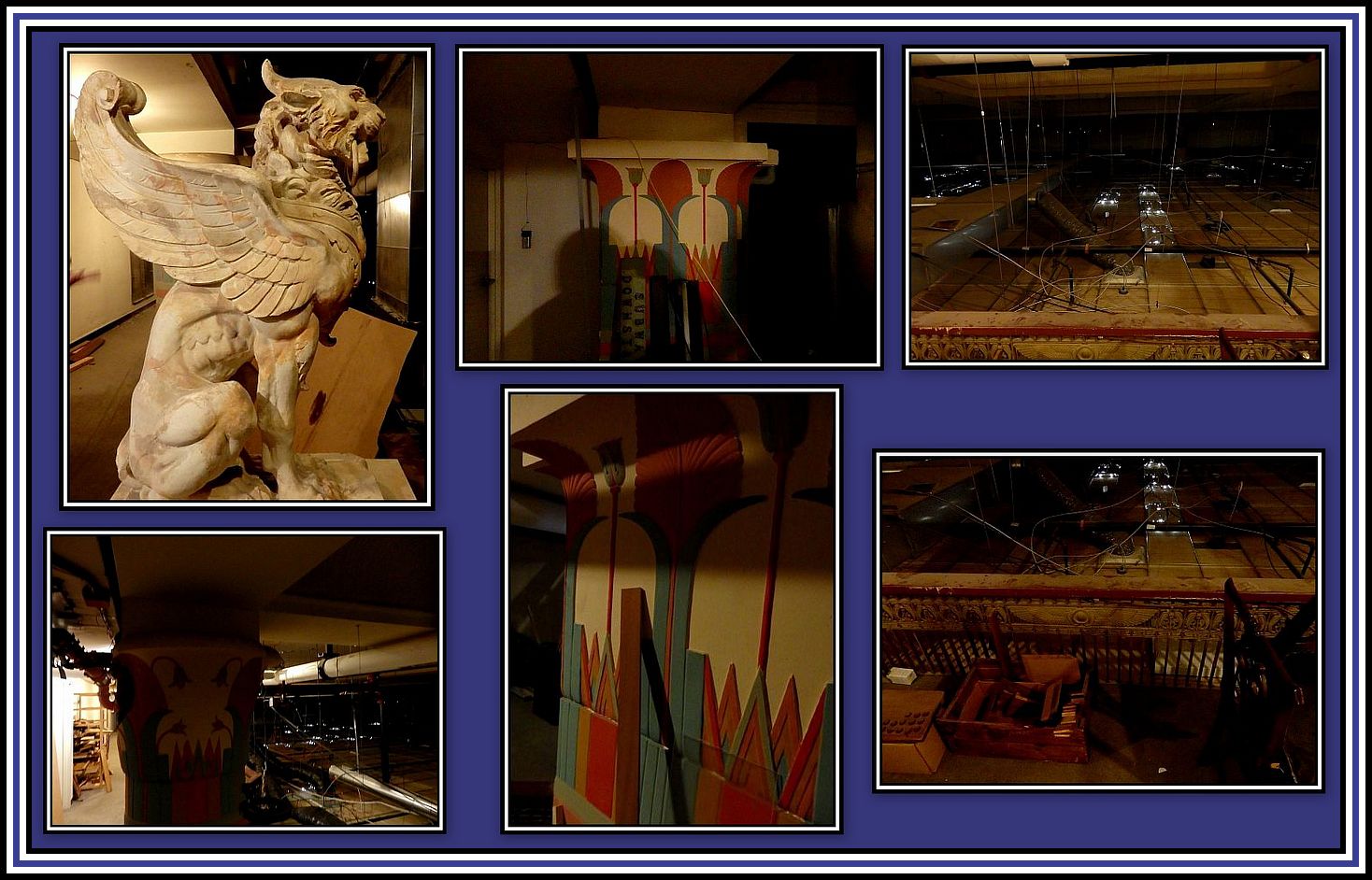 The Remnants of Egyptian Hall above the ceiling of the Executive Offices
The Remnants of Egyptian Hall above the ceiling of the Executive Offices
Both Greek and Egyptian Halls were no strangers to organs, as both were once installed with Austin Pipe Organs.
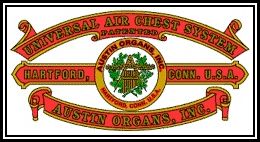 Proud Of Our Past, and Focused On The Future
Proud Of Our Past, and Focused On The Future
This is the byline used by the Company in its Centennial Celebration
The Austin Organ Company is one of he oldest organ manufacturers in the U.S. and was founded in 1898 in Boston by John Turnell Austin, who had come to the U.S. in 1889 from England. Mr. Austin is responsible for the Universal Air Chest System, which is an airtight chamber with the chest action on the ceiling of the chamber. As a result, entry to the chest could be made from below while the organ was in use. which allowed fine adjustments of the organ keying action. In 1937, the company became Austin Organs Inc and moved operation to Hartford C.T. where it remains today. It is interesting to note that the company built glider wings for a while during the Second World War and also coat hangers.
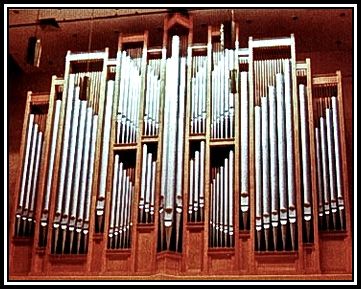 Austin Pipe Organ, The Forbidden City Concert Hall, Beijing
Austin Pipe Organ, The Forbidden City Concert Hall, Beijing
This photograph appears at Pipedreams (American Public Media)
Awaiting permission to reproduce this photograph
The organ once present in Greek Hall had a console decorated with marquetry matching the inlaid paneling of the Hall. The organ was removed from the Hall by Rodman Wanamaker in 1928 and moved to the Baptist Home (Deer Meadows) in Philadelphia and had a chapel built a around it. Seemingly the organ was moved whole to the Home and slipped into the chapel and then the East Wall was built. Apparently Mr. Rodman had the chapel built to same specifications as Greek Hall in order to mimic, as near as possible, its acoustics.
An Austin Pipe Organ was installed in Egyptian Hall in 1904. The organ was played at a number of concerts both with and without bands made up of youthful staff members. In 1938, Egyptian Hall was re-modeled for use as office space and the organ was removed. The character of the Hall was destroyed during the remodeling process, as water and heating pipes were hung for upstairs offices that necessitated cutting through the plaster art work that decorated the Hall. Today the lower level of the Hall forms part of R. H. Macy & Company’s executive offices while another area is used for the placement of the Store’s Dickens Village at Christmas. Unfortunately the erstwhile Egyptian Hall Austin Organ when removed was sold off in pieces. 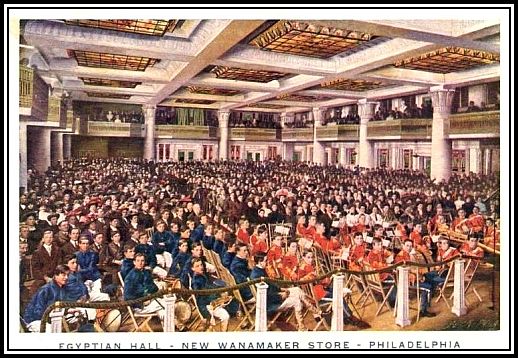
-oOo-
Today Greek Hall is still used as a Special Purpose Hall and during Wanamaker Organ Festival 2014, it was once again the venue of a Musical Concert. However, this time Greek Hall will not be the site of a Pipe Organ Concert. In 2007, Greek Hall saw the installation of a very special Theatre Organ. However, this was not just any Theatre Organ! No, this organ is a Mighty Wurlitzer, the King of Theatre Organs, and known as The Friends Wurlitzer Organ.
-oOo-
Click here to both see and hear a Mighty Wurlitzer played to perfection!
-oOo-
The Friends Wurlitzer Organ has an interesting history. Before coming to Greek Hall in 2007, the Organ began its life in entertainment at the Fox Theatre in Appleton, WI when it opened on 16th November, 1929. At some time the theatre became known as the Rio Theatre, but despite its remarkable atmospheric decor, it was demolished in April 1963.
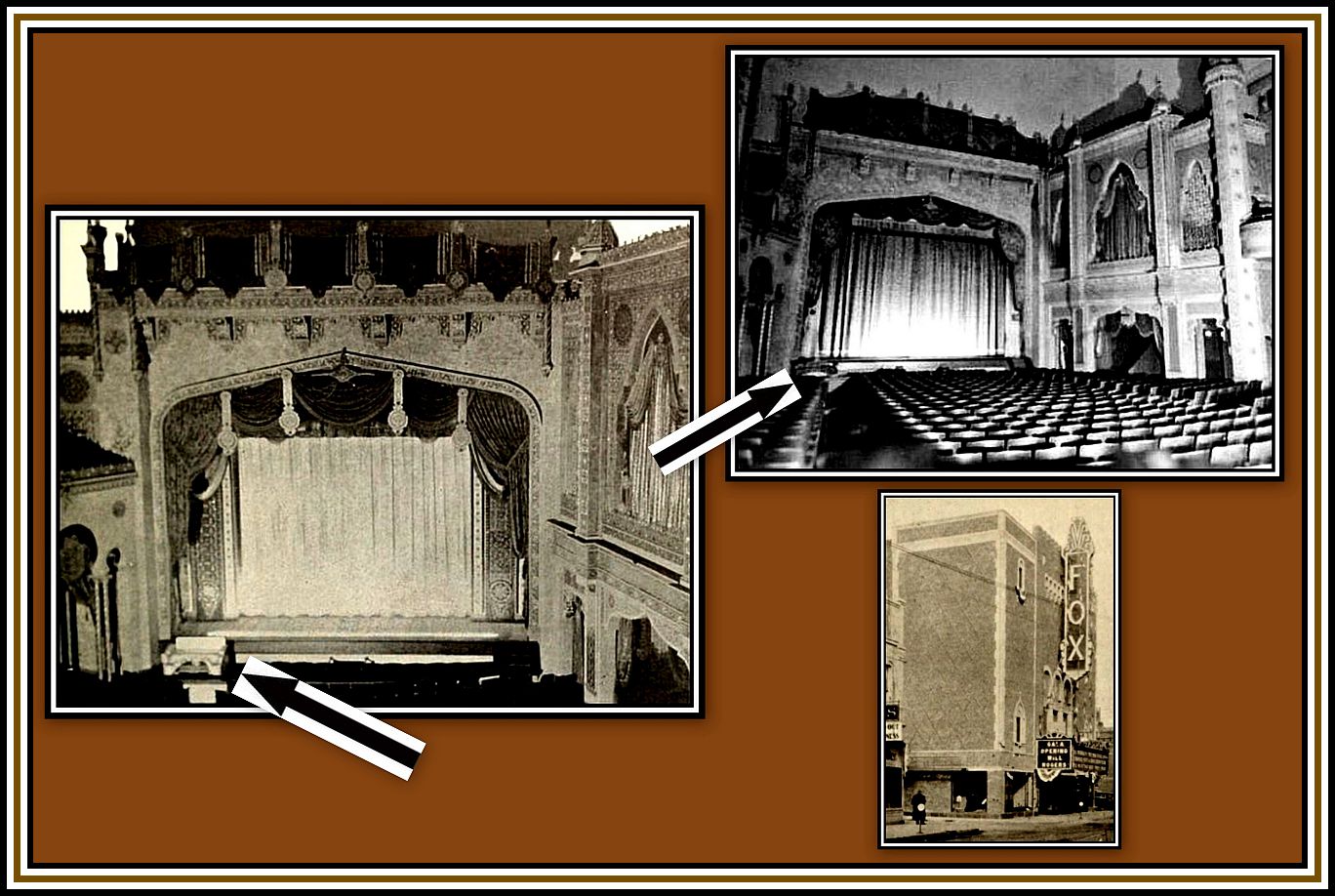 The Fox-Rio Theatre – the arrows point to the Mighty Wurlitzer Organ
The Fox-Rio Theatre – the arrows point to the Mighty Wurlitzer Organ
These photographs appear at Cinema Treasures – awaiting permission to reproduce them
I have not been able to find out when the Organ was removed from the Fox or Rio Theatre, but in 1960 it came into the hands of Lowell Ayars (1926-1992), who was a Theatre Organist and teacher and was affectionally known as The Singing Organist. Mr. Ayars had the Organ installed in his home in Bridgeton, N.J. where it remained until 1992.
With his passing, the Organ was left to Mr. Brantley A. Duddy who was able to organise its move to the Smithsonian Institutewhere it was intended to form part of a permanent exhibition devoted to The Arts.
Click here to see the GRAM-R-PHONE video, Organ Celebrities, 26: Lowell Ayars
Seemingly plans change and apparently the Institute decided that the Organ would no longer be displayed and plans were made for it to be stored in 1996.
As the proverb states: It’s an ill wind that blows no good. In 2007, after some discussion, the Smithsonian Institute decided to offer the Organ as a gift to The Friends of the Wanamaker Organ gratefully accepted.
The Organ was transported and installed in Greek Hall through the courtesy of the Smithsonian Institute and Mr. Brantley A. Duddy and through the energy and expertise of Mr. Curt Mangel, Curator of The Wanamaker Organ. Private funding for this venture came from the American Theatre Organ Society, the Arcadia Foundation, R.H. Macy & Company and contributions made by a number of individuals.
A special thank you is given to everyone who helped bring this wonderful instrument to Greek Hall where we are able to enjoy it.
-oOo-
MEET ME IN GREEK HALL …. LOUIS!
The afternoon activities of Wanamaker Organ Day 2014 began in spectacular fashion with a Pops Concert given by Mr. Tedde Gibson on the Friends Wurlitzer Organ. The magnificent Greek Hall was filled to capacity with spectators wanting to hear this wonderful instrument played by such a talented virtuoso. The musical pieces to be played for our entertainment were to include some from the film, Meet me in St. Louis.
(Edited version of that found at https://www.youtube.com/watch?v=SI7EzG1cRa8)
Mr. Gibson also provided an interesting commetary to accompany his playing and also allowed us to see the Wurlitzer Organ rise and fall on his pneumatic lift! One could easily imagine it rising up and descending down into an orchestra pit, as it obviously once did.
The only piece of music I could find played by Mr. Gibson is the hymn, O For a Thousand Tongues to Sing, that has been uploaded by friends of his and may be heard by clicking here.
-oOo-
MUSICAL ACCOMPANIMENT
I had taken a place at the back of the Hall close to an exit since the Concert was to be followed by the screening of the silent film classic, Mark of Zorro with Douglas Fairbanks complete with musical accompaniment provided by The Friends Wurlitzer Organ.
Although I wanted to hear as much as possible of the musical accompaniment to the film, I was convinced that sooner-rather-than-later I would have had enough and want to escape or risk slipping into slumber.
-oOo-
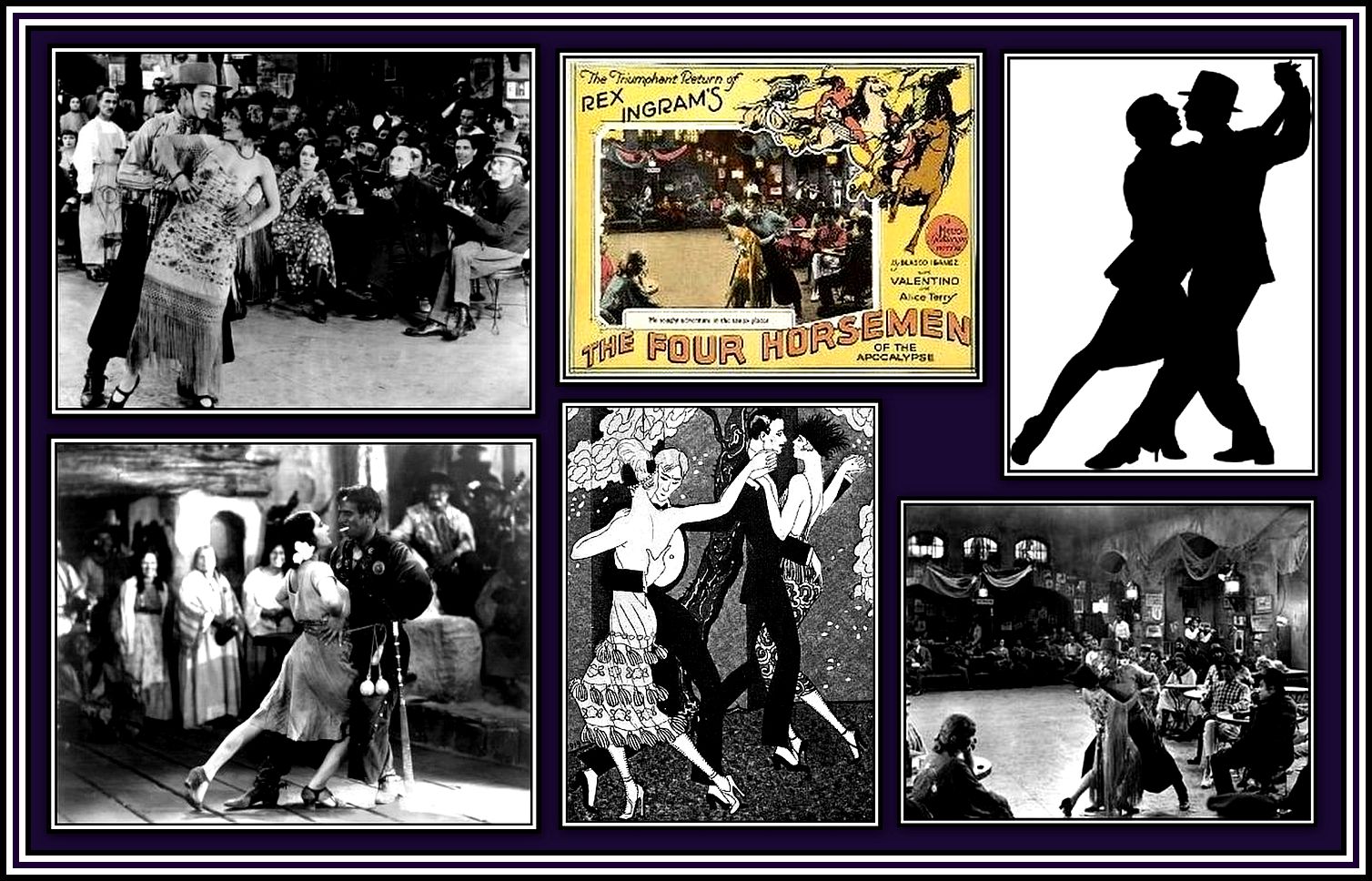 Tango in Silent Film
Tango in Silent Film
The Tango Sequence from The Four Horsemen of The Apocalypse (1921)
In my ignorance, I was under the impression that Silent Films were shown only with live piano accompaniment. I did not realise that in the U.S. at least, beside the piano, they were often accompanied by large orchestras or by Theatre Organs. (I have no idea if this was also the case elsewhere). The advantage of the Theatre Organ was that it was able to fill a gap between piano accompaniment and a large orchestra. These instruments offered a wide range of special effects and were able to simulate certain orchestral sounds together with percussion effects such as bass drums and cymbals and sound effects ranging from galloping horses to thunder.
Originally, musical accompaniment was improvised by pianists. However, later once orchestras were used, a full musical score was produced for playing. The first fully written scores to accompany a film were composed in 1908, by Saint-Saëns (1835-1921) for the film, The Assassination of Duke Guise, and by Mikhail Ippolitov-Ivanov (1859-1935) for the film, Stenka Razin.
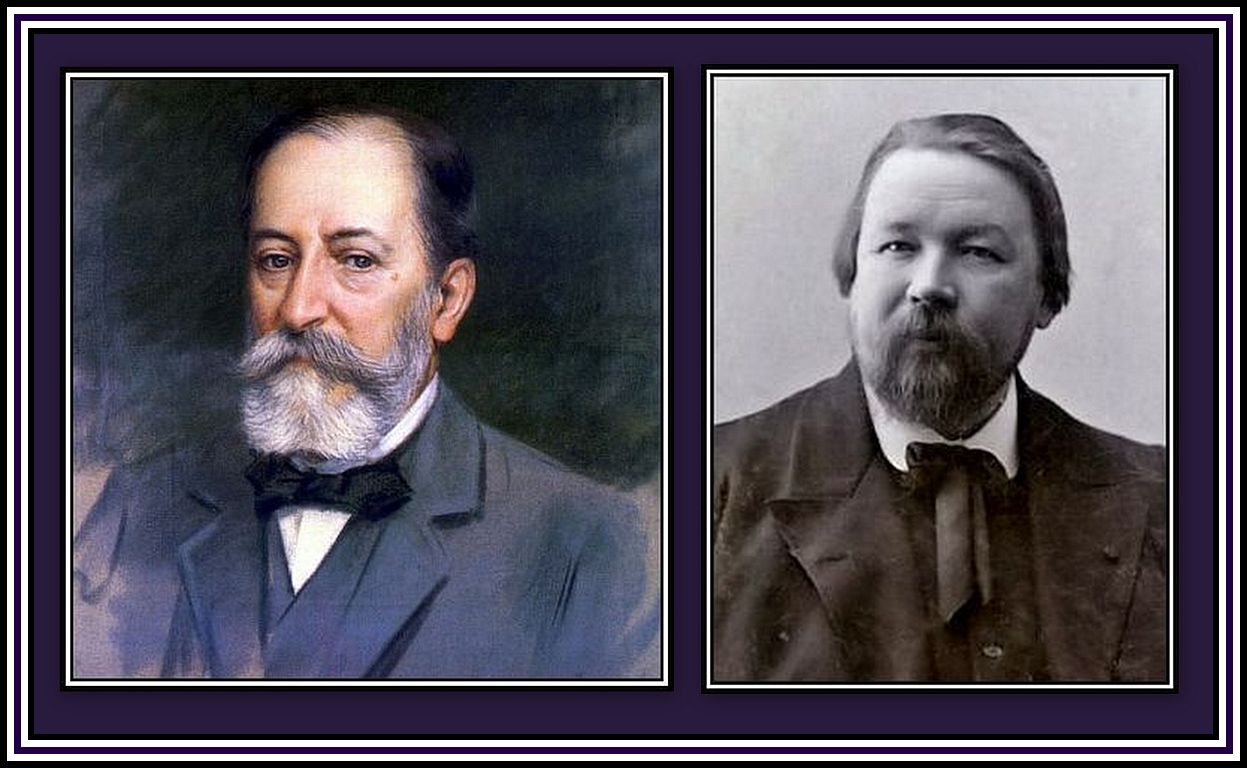 Left: Camille Saint-Saëns; Right: Mikhail Ippolitov-Ivanov
Left: Camille Saint-Saëns; Right: Mikhail Ippolitov-Ivanov
Whenever the piano was used, it became commonplace for soloists to play a score provided on Sheet Music. However, both piano and organ soloists would often improvise to heighten the either the drama or add to the romance being screened.
With the advent of Talkies, the Organs were often removed and sold. A number of these Theatre Organs were bought by British Entrepreneurs. As I have said in my series, The Granada Theatre Circuit, Mr. Sidney Bernstein purchased the Mighty Wurlitzer organ of the Majestic Theatre in Sacramento, California where it had been installed in 1926. It was brought to the Granada Theatre Tooting in 1931 following some modification and enlargement.
Other organs were sold to Ice Rinks, Sports Facilities and schools.
-oOo-
SILENT FILMS
I have to admit that I have never really enjoyed silent films. However, I also have to admit that I haven’t been able to watch many. Those that I had seen, at least in part, were shown on television and generally shown late at night. I fear that they sent me to sleep!
-oOo-
The first silent film that I saw in its entirety was The Sheik (1921) with Rudolph Valentino. I watched it on a television set with a 12-inch screen in Paris late on a Sunday night. The film had French titles, which I could not follow! Perhaps not the best setting to see the film! To be fair, I did try sometime later to watch the film when it was shown on BBC-2, but alas, I fear that I quickly slipped into a deep and peaceful sleep and missed most of it.
-oOo-
My next venture into the world of silent cinema never actually took place! I smile now when I think about it and also kick myself at the same time!
I had been given the opportunity of seeing a classic film that had been recently restored and shown to great critical acclaim. The film was Napoleon (1927), which had been directed by Abel Gance, starred Albert Dieudonné and was reconstructed by Kevin Brownlow.
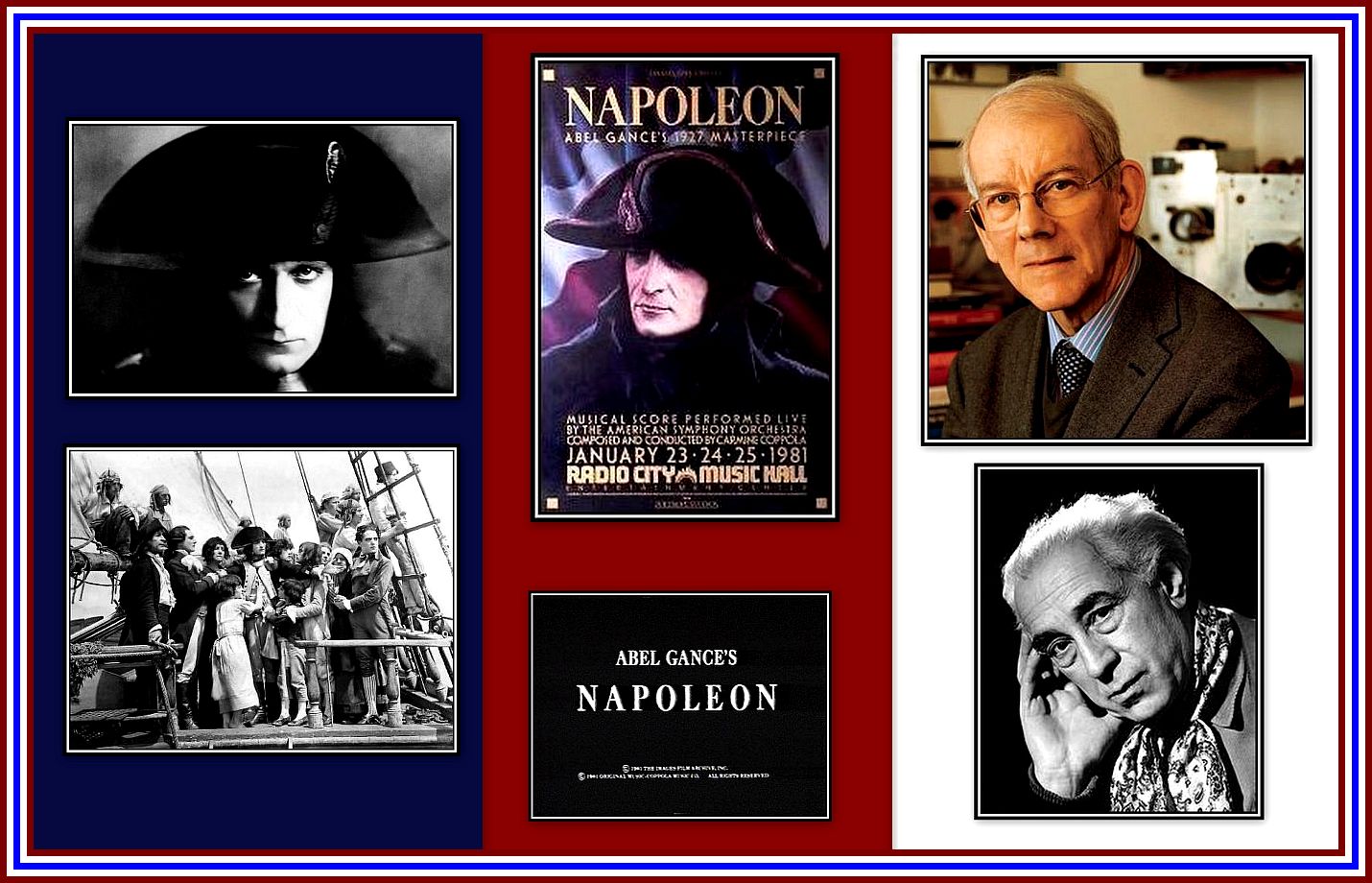 Left: Albert Dieudonne; Top Right: Kevin Brownlow; Bottom Right: Abel Gance
Left: Albert Dieudonne; Top Right: Kevin Brownlow; Bottom Right: Abel Gance
-oOo-
Kevin Brownlow is now a film historian, but as a teenager together with Andrew Mollo, they made the film, It Happened Here. This film caused a sensation when it was first released in 1965, as its setting was an alternative Britain now conquered by Nazi Germany. Many groups were opposed to the film and although I remember seeing it at the London Pavilion, I don’t think it ever went on General Release in Britain. I saw this film again several years ago when a guest of Robert Osborne requested it be shown on TCM. The film surprised him. I recommend that the reader read the history of the making of this film since it makes for an interesting read and involved the directors, Stanley Kubrick (who provided film stock) and Tony Richardson (who helped pay for the final production).
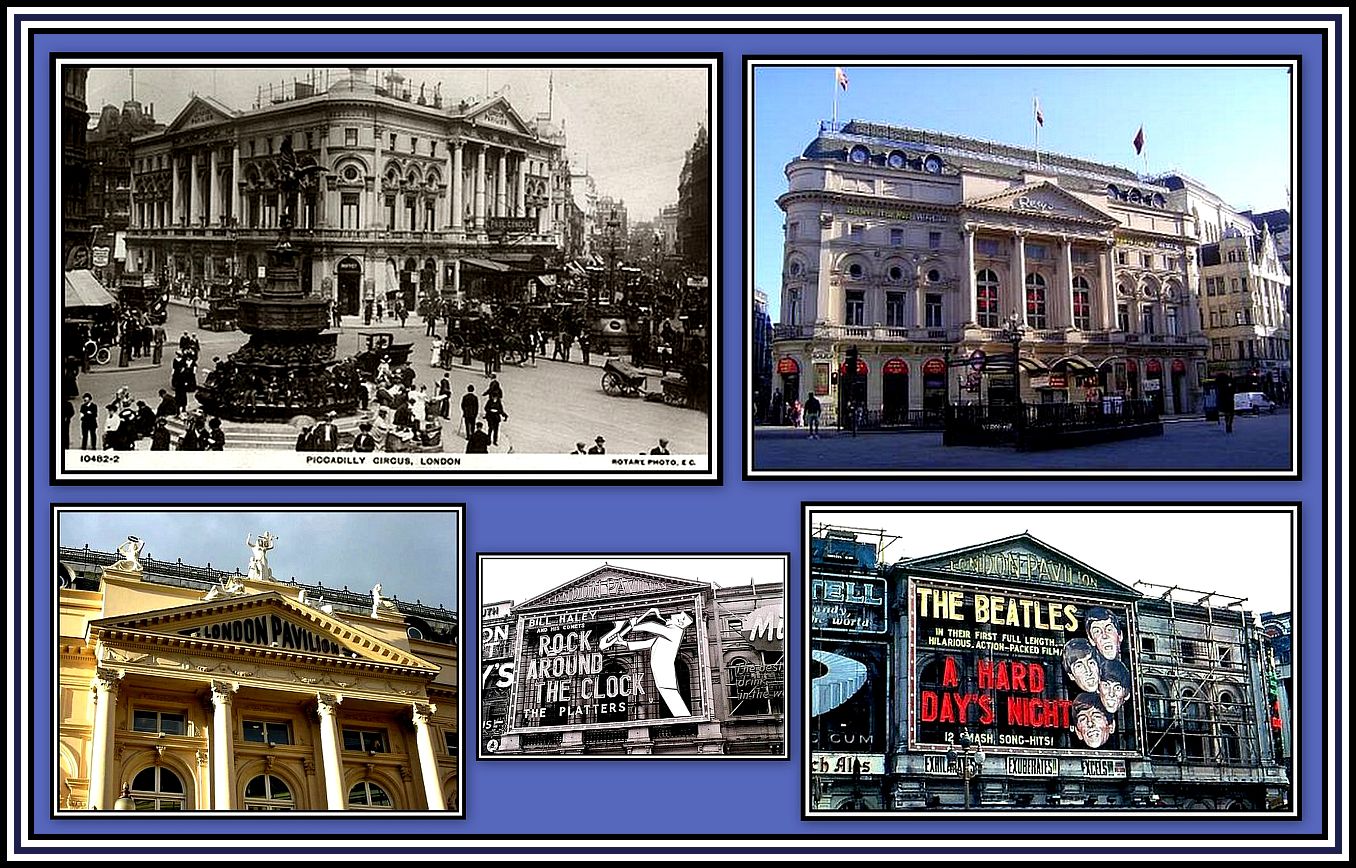 The London Pavilion through the years
The London Pavilion through the years
-oOo-
Kevin Brownlow spent a number of years searching the world for bits of the film, Napoleon, and painstakingly undertaking its reconstruction. The long and, I am certain arduous task of bringing Napoleon once more to the public, came to fruition on 31st August, 1979 when it was shown at the Telluride Film Festival in Colorado to great acclaim.
And now here comes my next association with silent film: I had the chance to see the reconstructed Napoleon when it was shown at Radio City Music Hall in New York between 23rd and 25th January, 1981.
For these screenings, the film had been re-edited and released by American Zerotrope (through Universal Pictures) and presented with a score written by Carmine Coppola. Each screening was shown to an extremely appeciative standing-room-only audience and was critically acclaimed by critics. I remember declining the invitation to see the film and thinking nothing more about it! (Naturally, it is only in retrospect that I regret this lost opportunity!)
Following this, my dealings with silent film were less than limited due mainly to my totally ignoring the genre. After my failures to appreciate the wonders of the silent cinema, I presumed that I would never change my opinion of these early masterpieces. (But we all know that it is dangerous to say never!)
-oOo-
I have enjoyed the television station, Turner Classic Movies (TCM), since it first began broadcasting in 1994. TCM has allowed me to see and re-see classic films from my childhood and earlier times and also to enjoy interviews with old stars led by Robert Osborne, TCM‘s original host, under the title of Private Screenings. The only thing I did not like about TCM was their showing on Sunday nights of Silent Films! However, nothing can be all bad and I did learn to tolerate these films since they were guaranteed to send me to sleep and allow me to get a good night’s rest and awaken refreshed for the Monday onslaught!
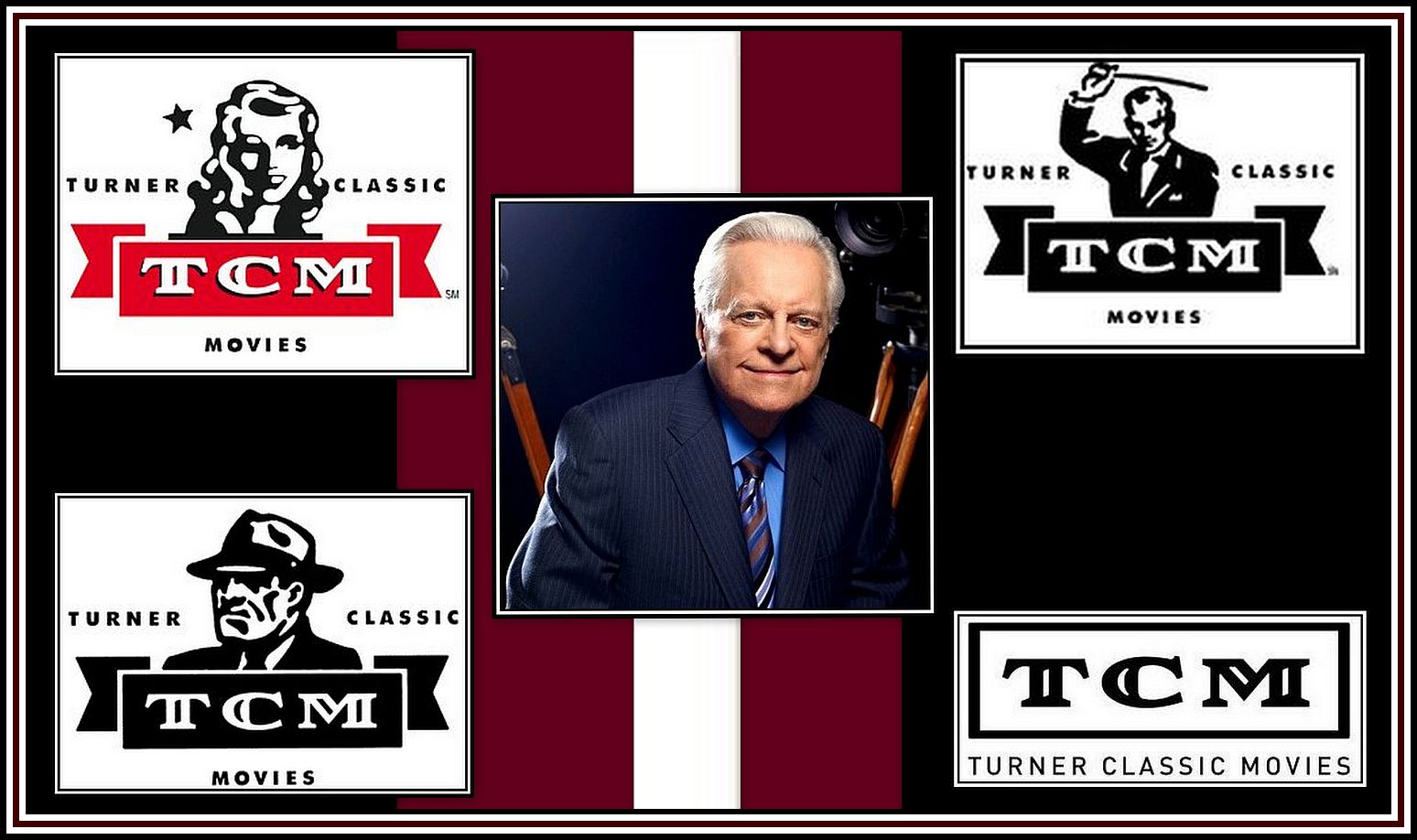 TCM Logos & Host, Robert Osborne
TCM Logos & Host, Robert Osborne
-oOo-
As a result of my ignoring Silent Films, I am no connoisseur or devotee of them and have managed to live quite happily with them. However, the wind of change was about to blow my way! Although I am still no connoisseur, I am on the way to becoming a devotee!
-oOo-
ZORRO TO THE ACCOMPANIMENT OF THE WURLITZER ORGAN
Following Mr. Gibson’s concert, Greek Hall was darkened and The Mark of Zorro (1920) began its screening and I readied myself to creep out the nearest exit once the moment came! However, I was in for a surprise.
I soon realised that the film was filled with interesting scenes, and above all, it was very funny. I knew that Douglas Fairbanks (1883-1939) was very athletic in his approach to film making, but I had no idea that he was also a very amusing comedian. Watching the film, and knowing that he enjoyed doing his own stunts, I was amazed at his ability to leap and jump and land without breaking his neck!
I have to confess that I laughed a lot, and loudly, throughout the film. Douglas Fairbanks’ interpretation of Zorro was hilarious and, when necessary, dramatic. I could not believe how enjoyable the film was.
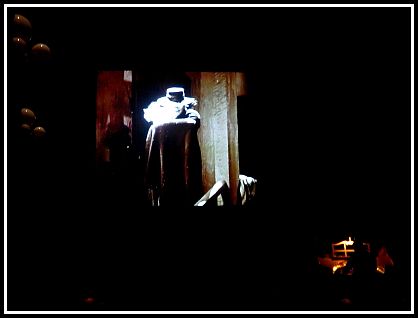 Zorro with Tedde Gibson at the Organ
Zorro with Tedde Gibson at the Organ
I think that Mr. Gibson’s accompaniment on the Friends Wurlitzer Organ helped me to appreciate the film. Obviously he had worked hard to find just the right piece of music to heighten the merriment or the drama taking place in the film. The audience were especially amused when Mr. Gibson began to play the Final Jeopardy music when the hero made an exaggerated pretense of fatigue.
 Mr. Gibson at the Friends Wurlitzer Organ
Mr. Gibson at the Friends Wurlitzer Organ
All too soon the film came to an end and I found myself applauding Mr. Gibson heartily along with my fellow audience members.
I was stunned at myself, as I had enjoyed the film very much and was already planning on watching additional Silent Films whenever TCM planned to show them. I would like to offer Mr. Wilson my thanks for helping to open my eyes and discover both the charm and the entertainment of such films.
-oOo-
A VISIT TO SEE THE PIPES
Following the presentation of The Mark of Zorro and the wonderful performance given by Mr. Wilson, I had the opportunity to thank me. In addition, I got to talk to a delightful gentleman who seemed to know a great deal about the Wurlitzer Organ and who seemed willing, and happy, to answer my questions about the instrument. This gentleman was kind enough to invite me and a couple of other enthusiasts to accompany him, if we wished, to see The Pipes of the Friends Wurlitzer Organ!
I could not believe my ears. What an opportunity! And after a minute or two, we set off.
-oOo-
We left Greek Hall through one of the exit doors at the back and made our way long several corridors and then through a glass paneled door and there we were, in a Pipe Chamber. The area was full of Relays and Pipes. The gentleman gave details on which pipes we were being shown, but again, alas, I did not take notes and my memory is not good enough to recall what he said.
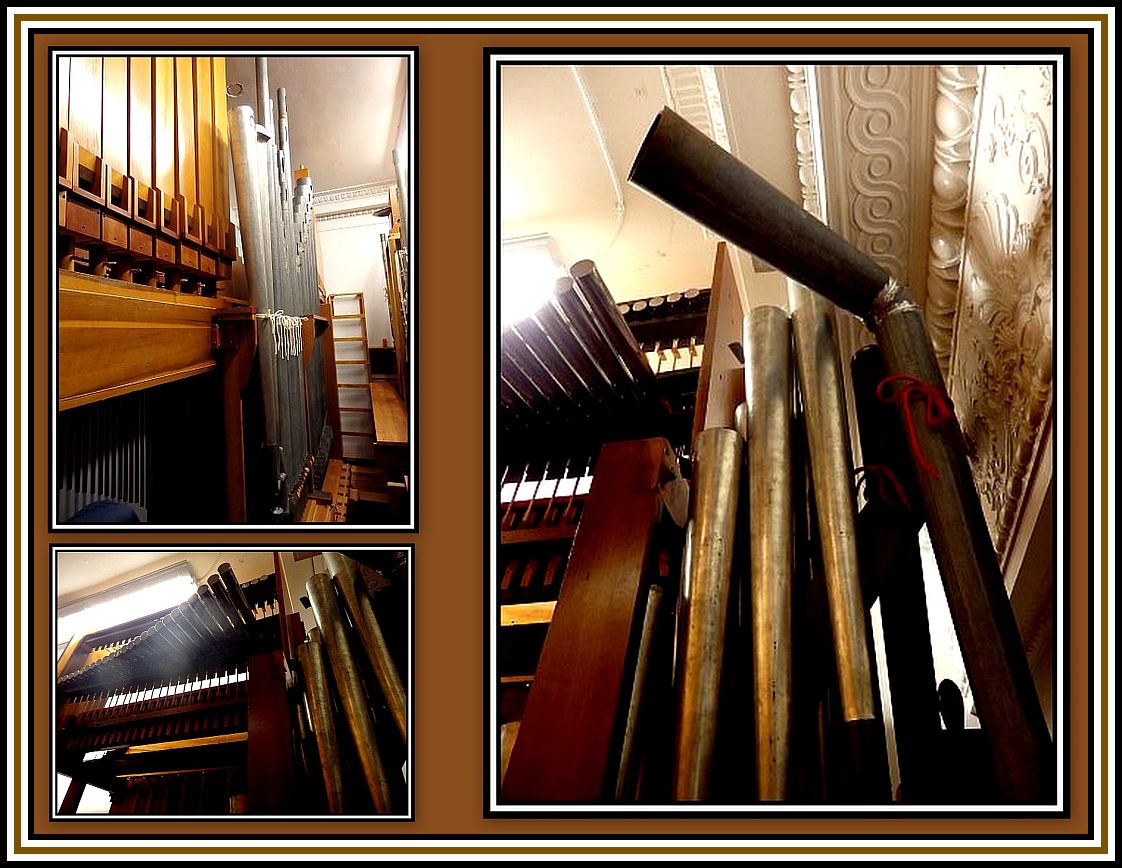 Examples of the Pipes of the Friends Wurlitzer Organ
Examples of the Pipes of the Friends Wurlitzer Organ
After the gentleman had shown us around the chamber and then answered a multitude of questions, he next took us over to a smaller area where the Organ Blower was housed.
The chamber containing the Pipes and Relays had not always been used to house these pieces of equipment. As one could see from the decor, it was likely to have been used for some grand purpose since the area was filled with decorative plastering and paneling.
I was extremely grateful to the gentleman for giving his time to show us the Pipes, Relays & Blower since I had never seen a Relay System or a Blower before and had only seen my first Pipe the day before.
-oOo-
Once the tour of this area was over, the gentleman kindly offered to show up The Workshop where the restoration and repair processes of The Organs took place. We were all grateful to him for offering this additional tour and eager to follow him. This tour not only proved most enlightening, but also allowed up to walk through corridors and areas of the Store long since closed off to the public.
We were led along a corridor and then climbed an old Service Staircase that was obviously much used in the past by the artisans of The Organ Workshop and Retail Staff, but which now was used most likely only by the artisans of the The Workshop.
At the top of the stairs, we saw the entrance to what is the Empire Room. What this room was used for was unknown to our Guide. We were unable to gain entry to it, as I discovered that the door was locked!
The long corridor leading from the top of the stairs proved to be filled with a vast amount of Treasure Trove including a few remnants of the Dancing Fountains that once were installed at the edge of the stage before the Faux Organ Pipes in the Grand Court. Unfortunately, I learned that these fountains would not be reinstalled.
The whole length of the corridor, on both sides, was literally jammed packed with the most interesting objets that were either waiting for repair or perhaps awaiting further use. Unfortunately I seemed to be the only one of our little group not to recognise the assorted Pipes and musical instruments. Since I did not want to hold up the group and also not to appear naive with endless questions, I kept my questions to a minimum. So forgive me for not being able to identify these objets. Perhaps readers who can identify them may like to write and enlighten me with their names. Any help would be much appreciated.
-oOo-
At the far end of the corridor was the Office and main Workshop area. The Office was well decorated with photographs on the wall and with desks and a number of musical instruments.
In addition, there is a small Austin Organ in the Office along with two pianos, one with a number of homely objects including a clock and a vase on top of it.
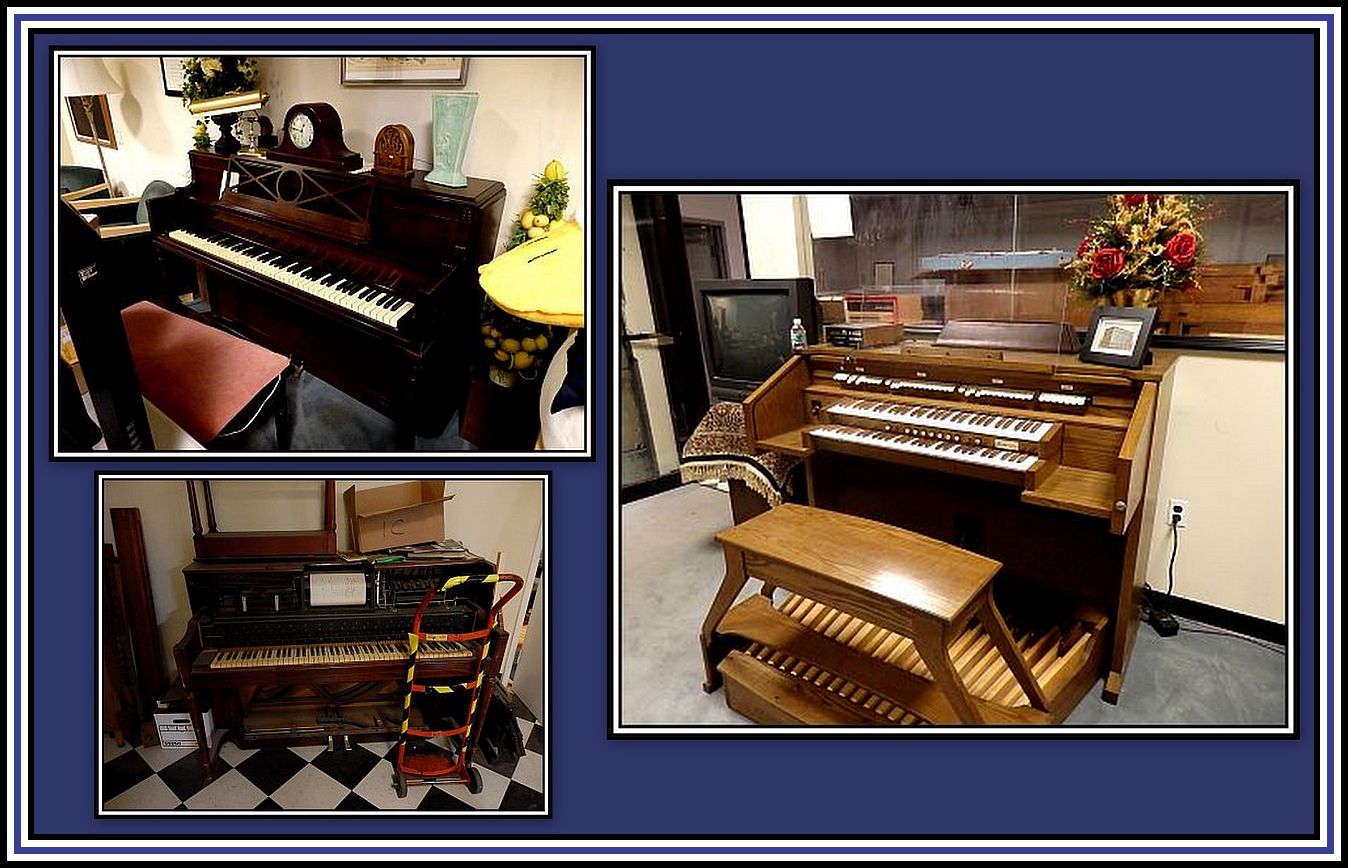 Left: Pianos; Right: An Austin Organ
Left: Pianos; Right: An Austin Organ
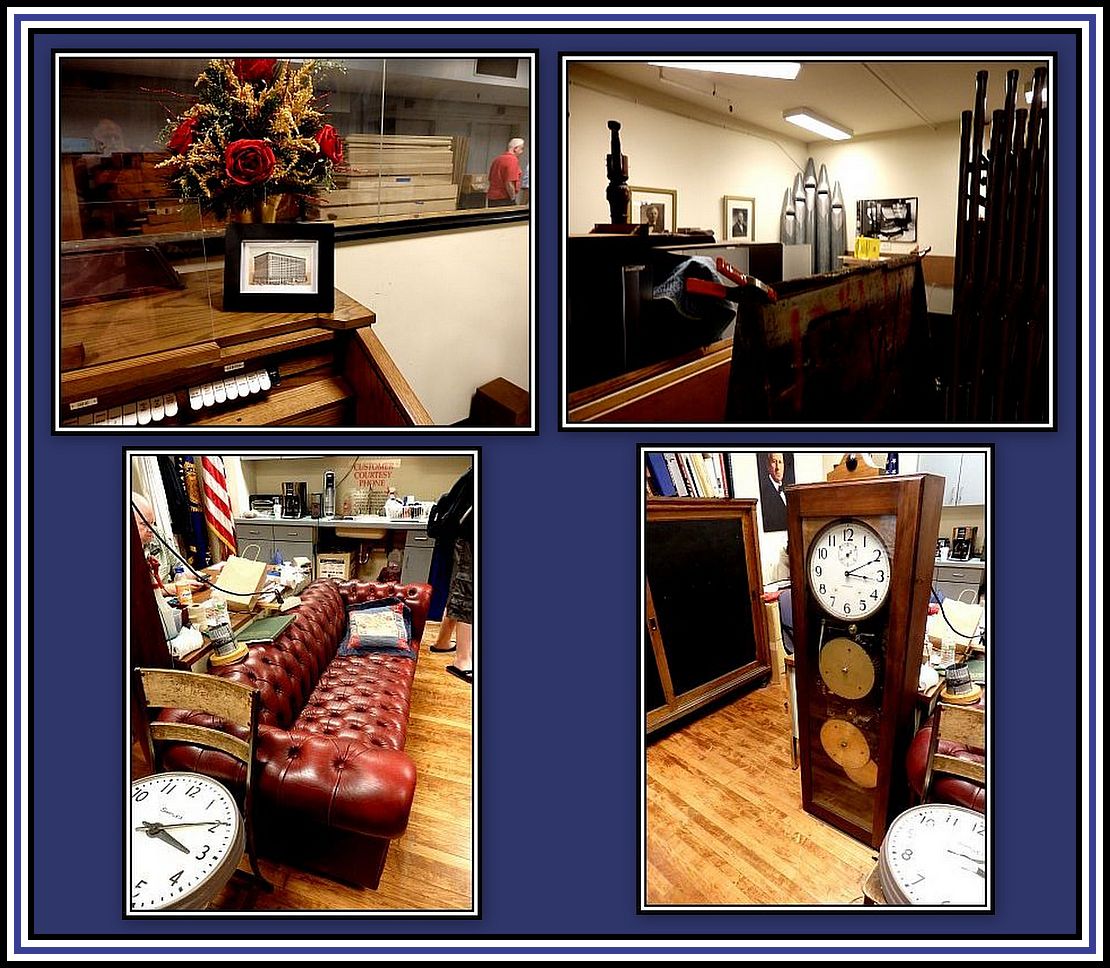 Pipes, Chesterfield & Clocks in the Office
Pipes, Chesterfield & Clocks in the Office
I was very impressed with the Office, as it had so many things that helped make it a comfortable place for working. I especially liked the Chesterfield sofa since I have always wanted to own one!
-oOo-
The Office opened up into a large Workshop that was equipped with work benches, a large electrical drill and saw and an assortment of tools. There were windows on two sides, which allowed natural light to stream in. Working hard on the floor was Mr. Scott Kipp, the head woodworker involved in Maintenance and Restoration Processes.
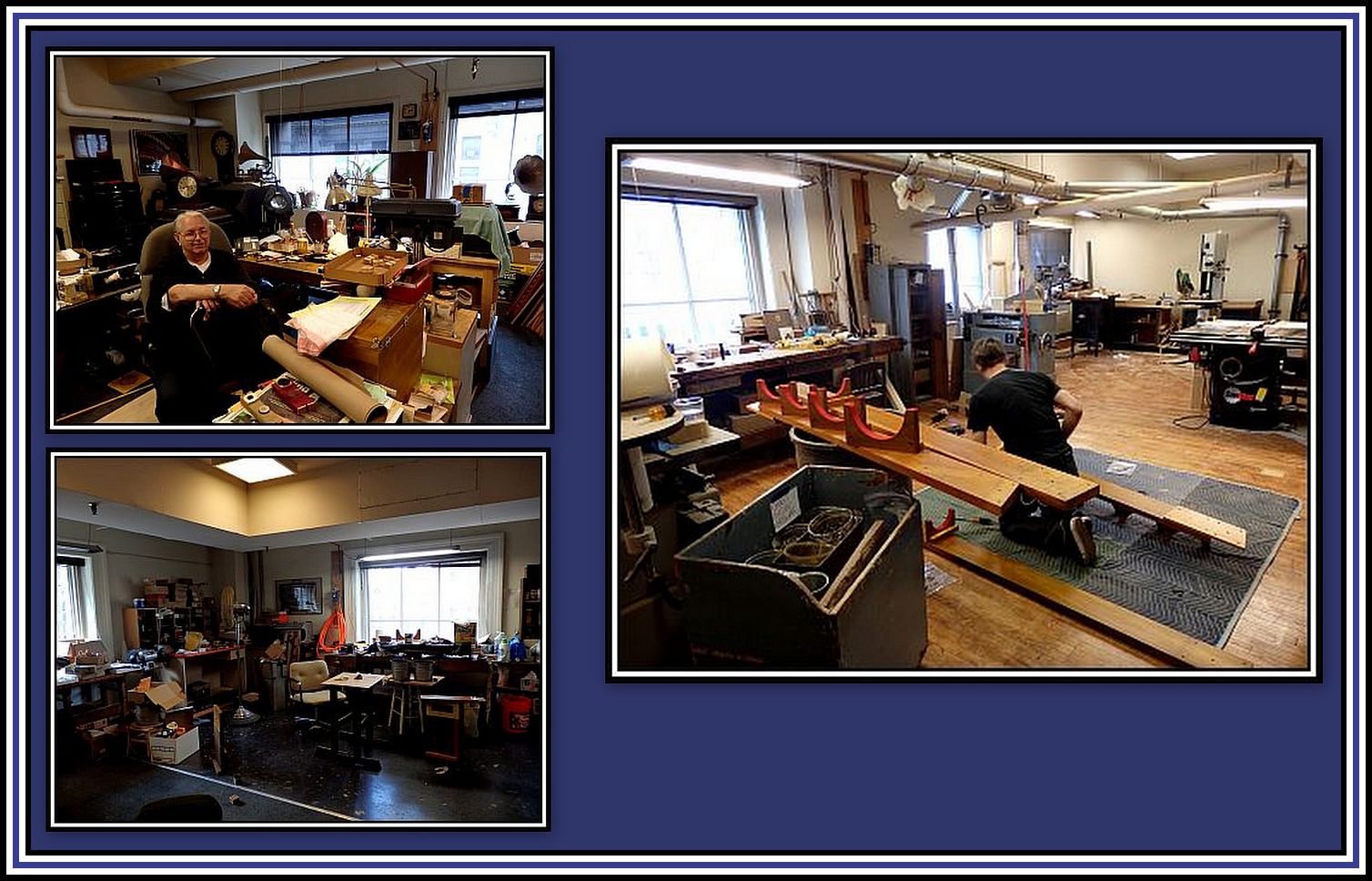 Top Left: unknown gentleman at the desk; Right: Mr. Scott Kipp at work
Top Left: unknown gentleman at the desk; Right: Mr. Scott Kipp at work
-oOo-
After looking around the Workshop, we made our way back to the Grand Atrium, but were led back via Egyptian Hall or should I say that area close to the ceiling that does not form part of the Office space below the installed ceiling.
Egyptian Hall was converted from a General Purpose Hall when built and was used as a venue for concerts and also as a retail space for high-end goods such a grand pianos. It was exotic in decoration with remarkable plasterwork, which was sadly spoiled with the installation of a ceiling and pipes and cables above to supply lighting and air-conditioning to the now-office space below.
The area between the original ceiling and the installed one is now filled with discarded objects, cables and pipes, but the tops of Egyptian-style columns are still visible as are some winged plaster mythological creatures. It is a sad to see what has become of this once magnificent Hall.
Following this, we were led to an exit that opened onto the third floor where the Executive Offices were found. The corridor here still shows the columns that once flanked the entrance to the erstwhile Hall.
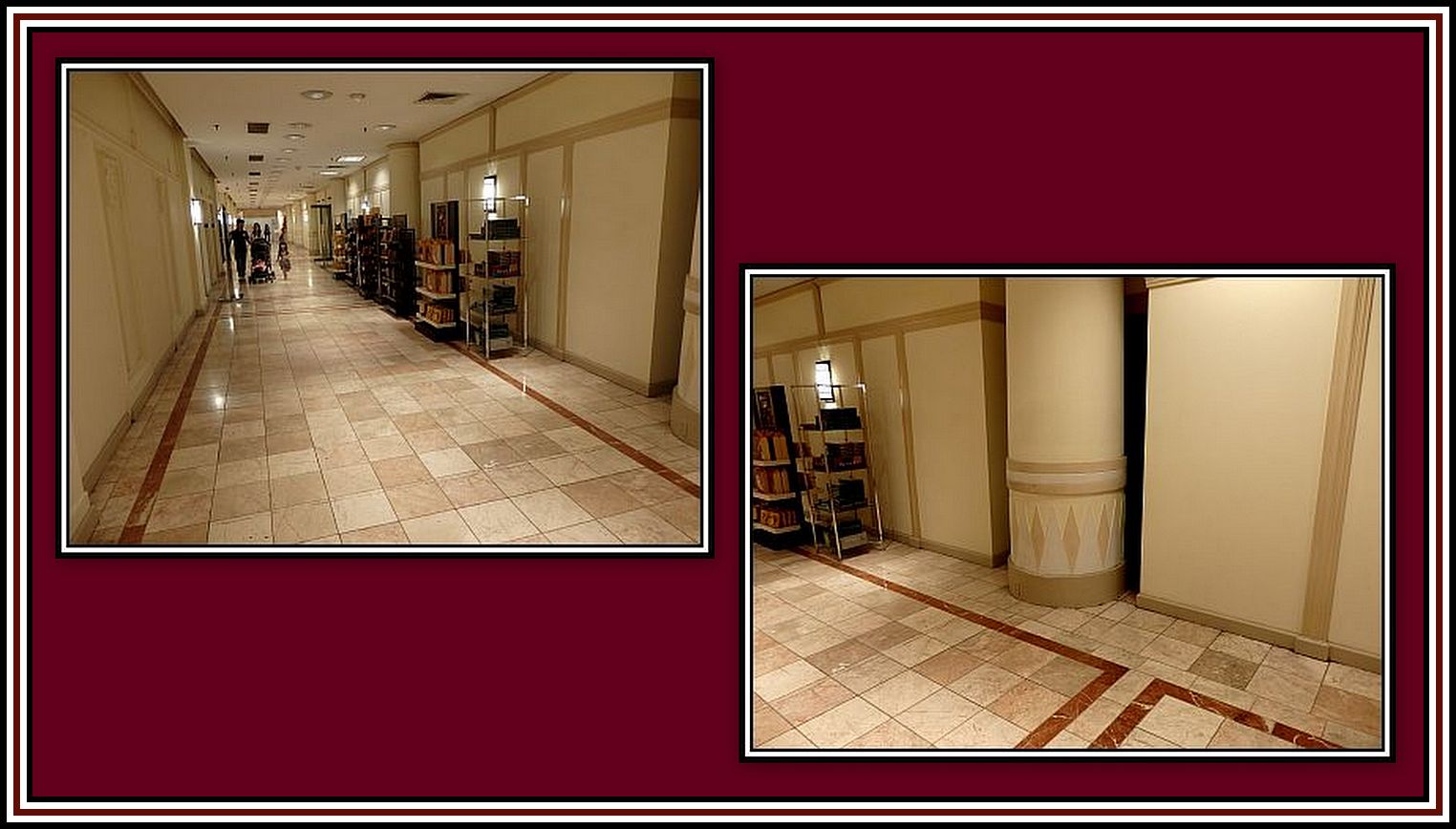 Egyptian Hall was once on the other side of the Right Wall of this corridor
Egyptian Hall was once on the other side of the Right Wall of this corridor
-oOo-
We thanked our guide for his kindness in giving of his time and told him how appreciative we were. Once I returned home, I was amused and slightly ashamed when I learned the identity of this gentleman. I learned that our guide was none other than Mr. Brantley A. Duddy! The same Brantley A. Duddy who had been left the To-Become-The-Friends-Wurlitzer-Organ by Mr. Lowell Ayars and who worked tirelessly to arrange for it to be brought to the erstwhile Wanamaker’s Department Store. I hang my head in embarrassment!
-oOo-
I have written an Appendix to this piece, which offers some amusing background, for those that are interested that is, on the flaw in my character that seems to result in my not recognising who certain people are when I meet them.
I once collided with an old man while turning the corner. He was knocked to the ground, but seemed to be unhurt. I helped him up and made sure he was fine and then saw him on his way. Later in the day, I went to the theatre where I was to see the old man again! Apparently he was the star of the play, and appeared to my eye at least, to be having a difficult time moving around the stage! It seemed that the old man was the American actor and comedian, Milton Berle.
-oOo-
ACKNOWLEDGEMENTS
I would like to thank Mr. Brantley A. Duddy for his kindness in allowing me to visit Behind the Scenes of the Friends Wurlitzer Organ, The Workshop and the upper reaches of Egyptian Hall.
I would also like to thank The Friends of the Wanamaker Organ for allowing certain photographs to appear here.
——oooOOOooo——
Click here to go to THE WANAMAKER ORGAN – PART SIX: APPENDIX
——oooOOOooo——
Click here to go to THE WANAMAKER ORGAN – PART SEVEN:
THE GRAND CHORAL CONCERT
——oooOOOooo——
Click here to return to THE WANAMAKER ORGAN – PART FIVE:
THE GRAND OPENING CONCERT – 2014
——oooOOOooo——
Click here to return to THE WANAMAKER ORGAN – PART FOUR:
A VISIT BEHIND THE SCENES
——oooOOOooo——
Click here to return to THE WANAMAKER ORGAN – PART THREE:
CONCERT DAYS
——oooOOOooo——
Click here to return to THE WANAMAKER ORGAN – PART TWO:
I’M OFF TO PHILADELPHIA IN THE MORNING
——oooOOOooo——
Click here to return to THE WANAMAKER ORGAN – PART ONE:
HISTORICAL BACKGROUND
——oooOOOooo——
Click here to go to THE WANAMAKER ORGAN – HOME PAGE
——oooOOOooo——
Click here to return to the TABLE OF CONTENTS
——oooOOOooo——

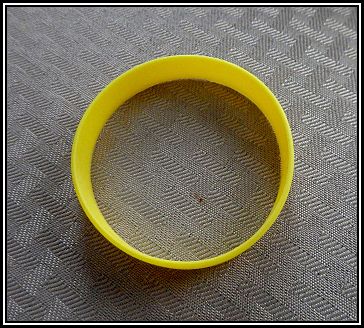
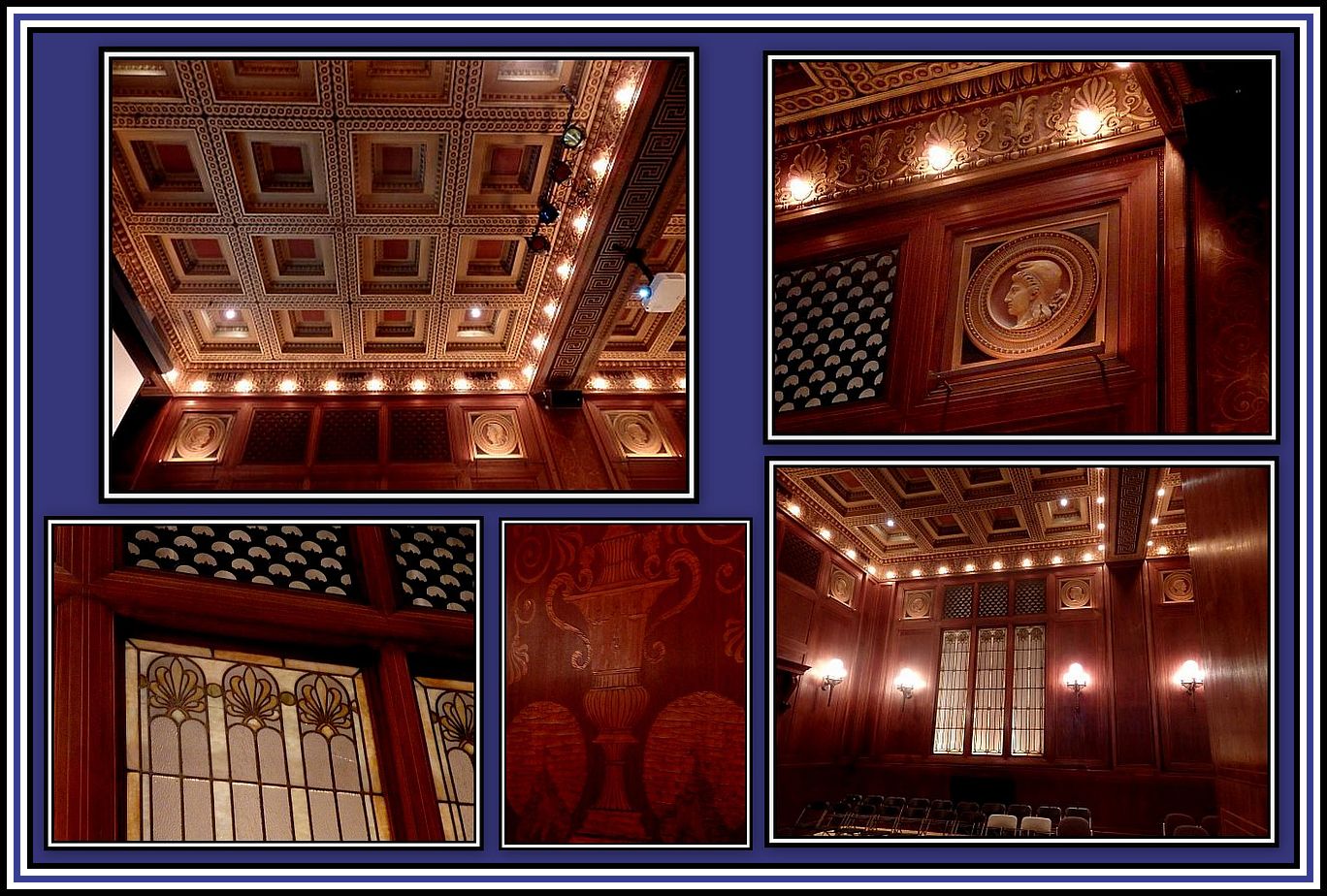
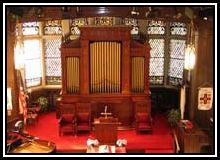
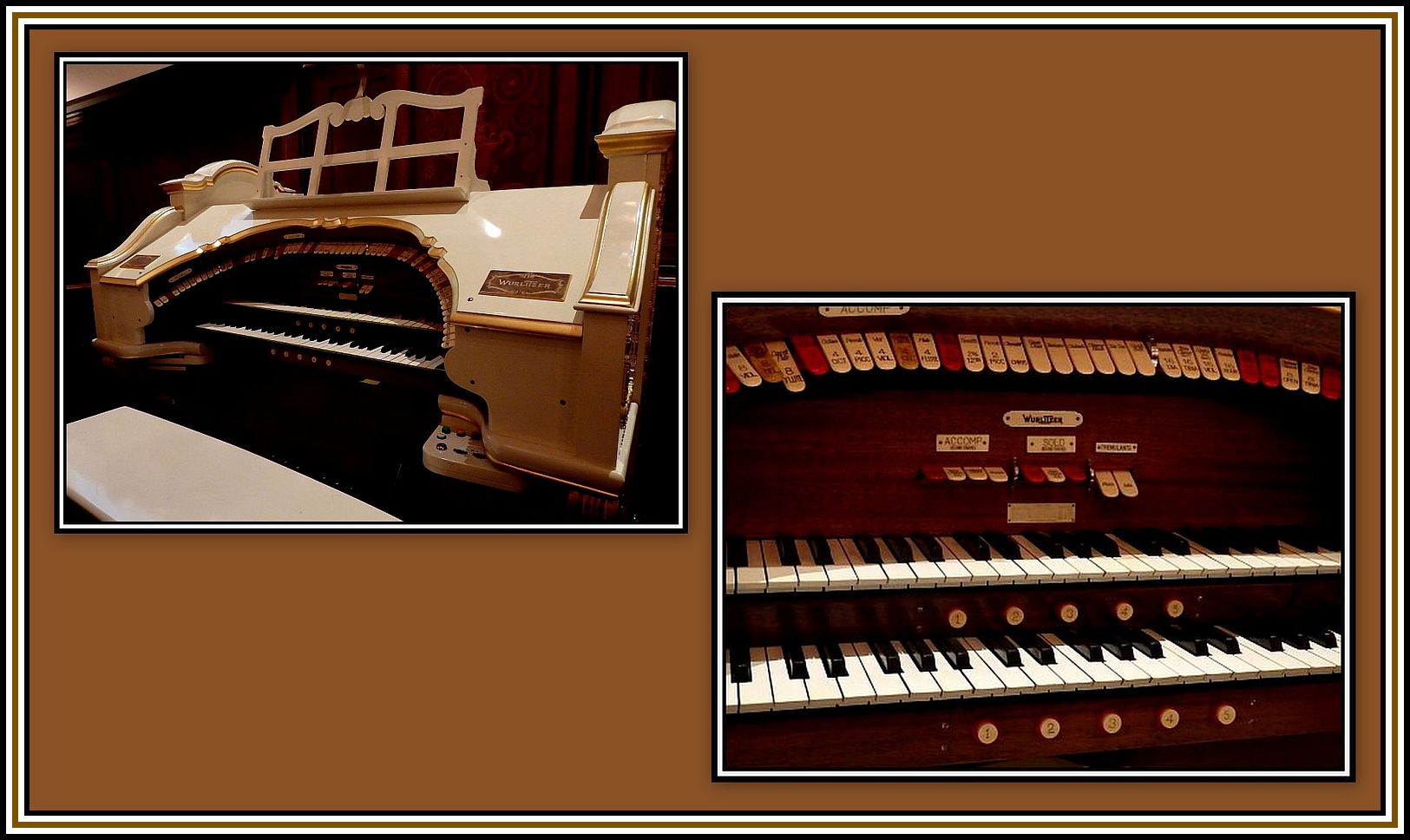
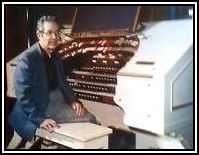
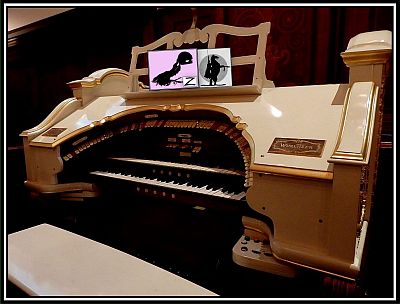
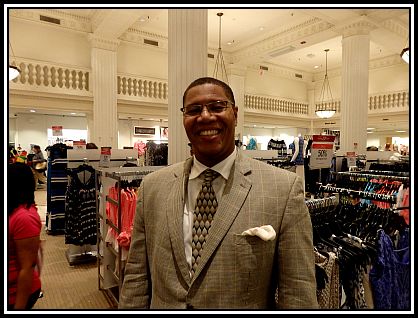
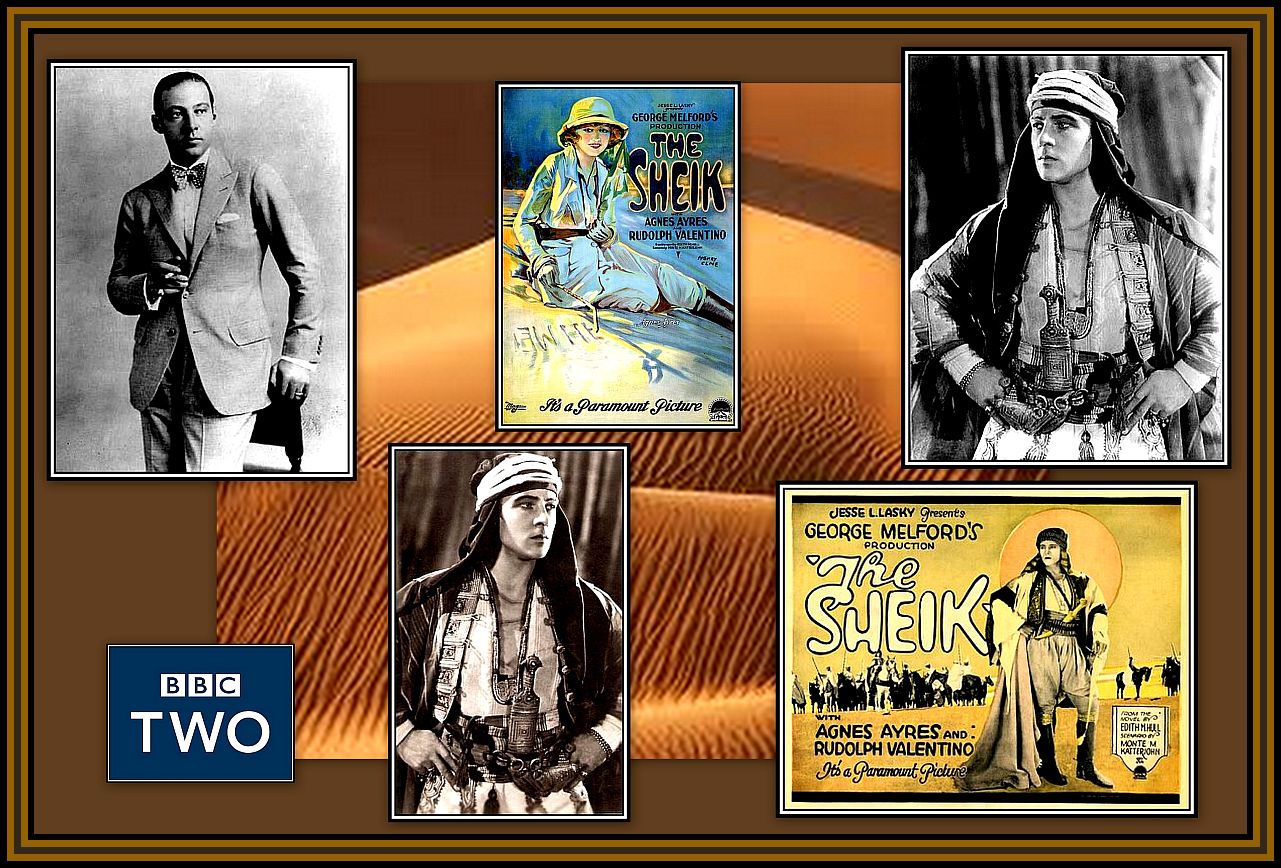
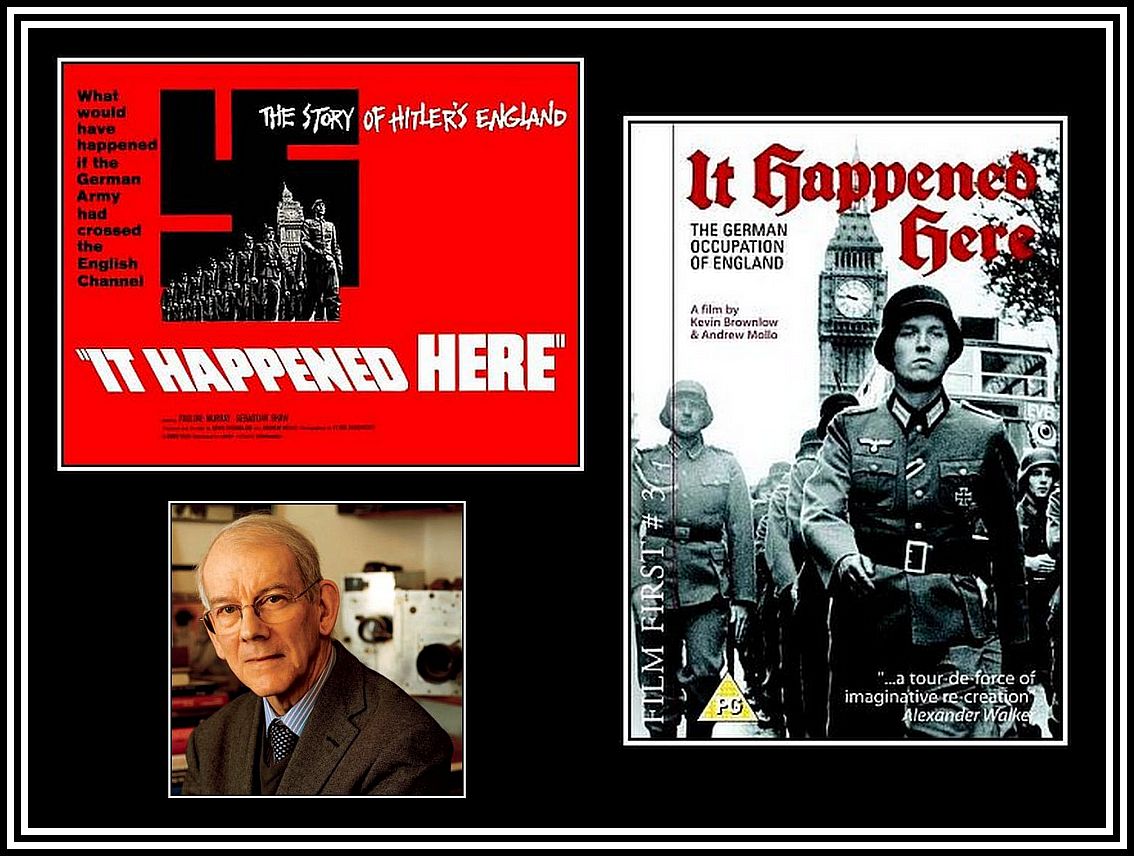
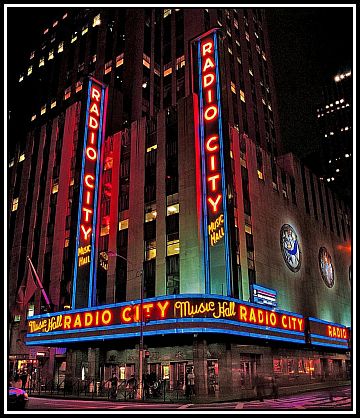
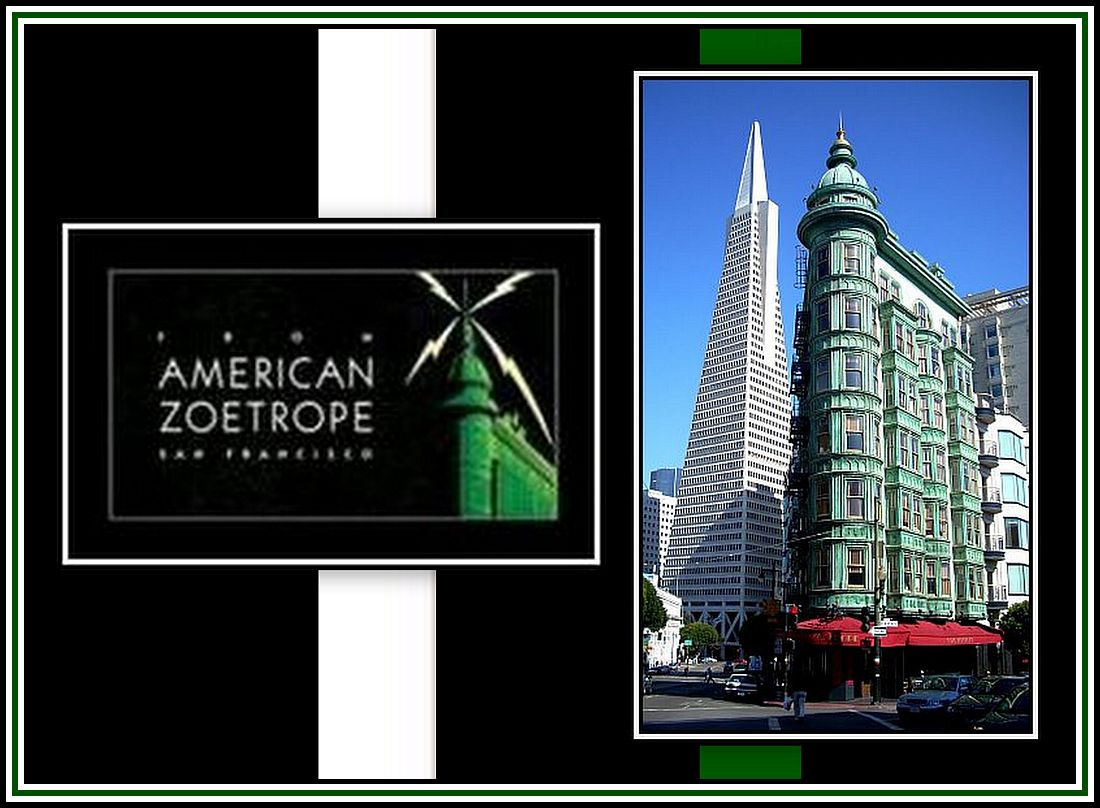
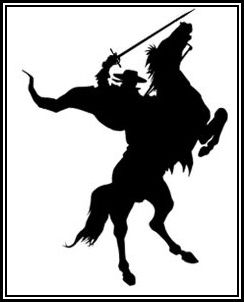
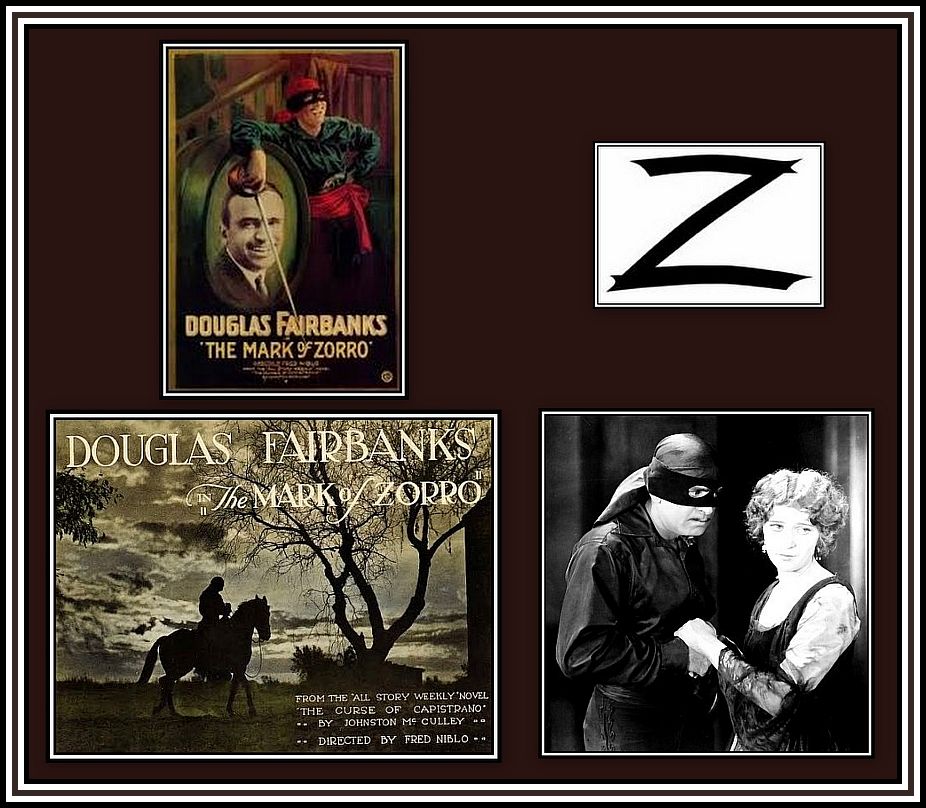
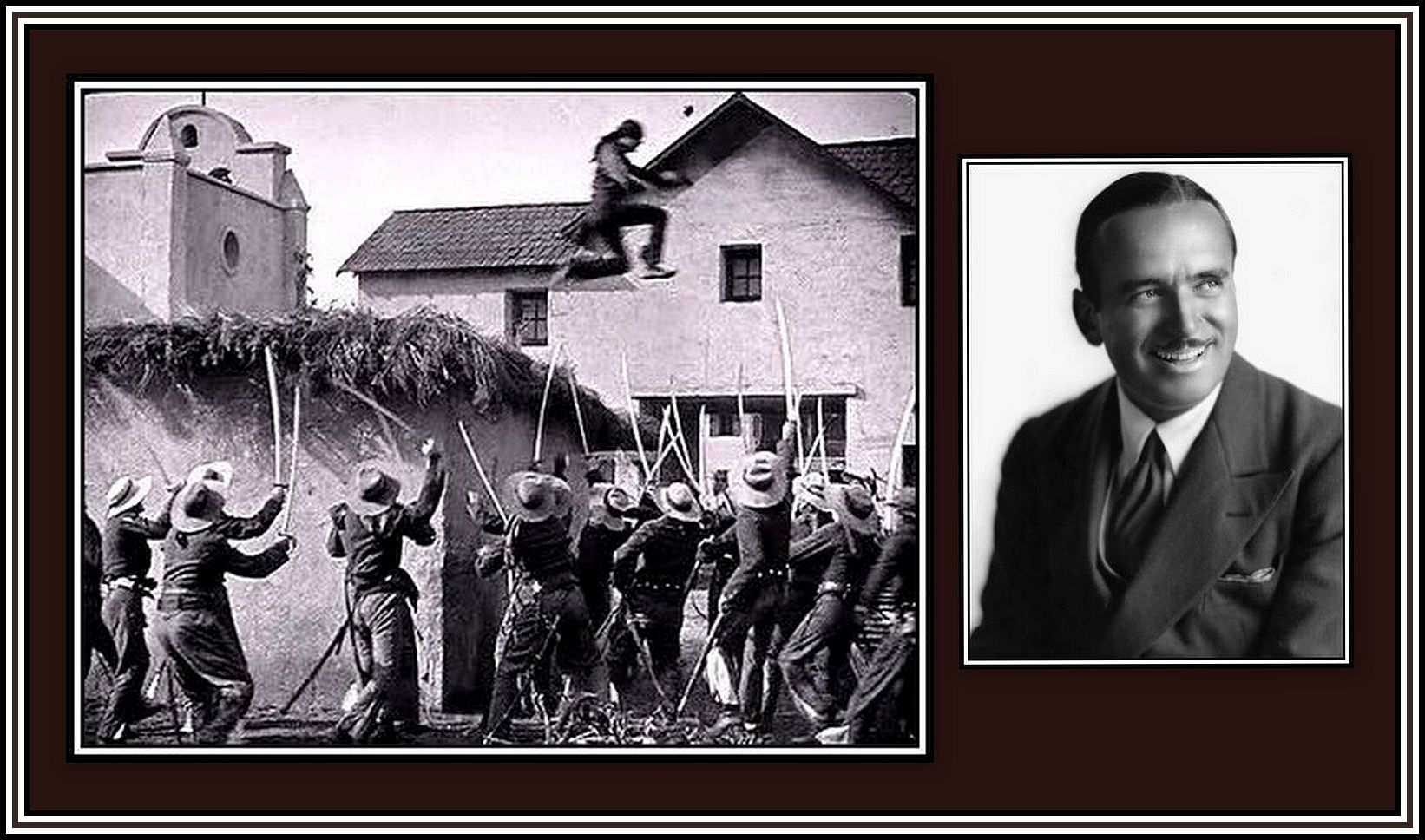
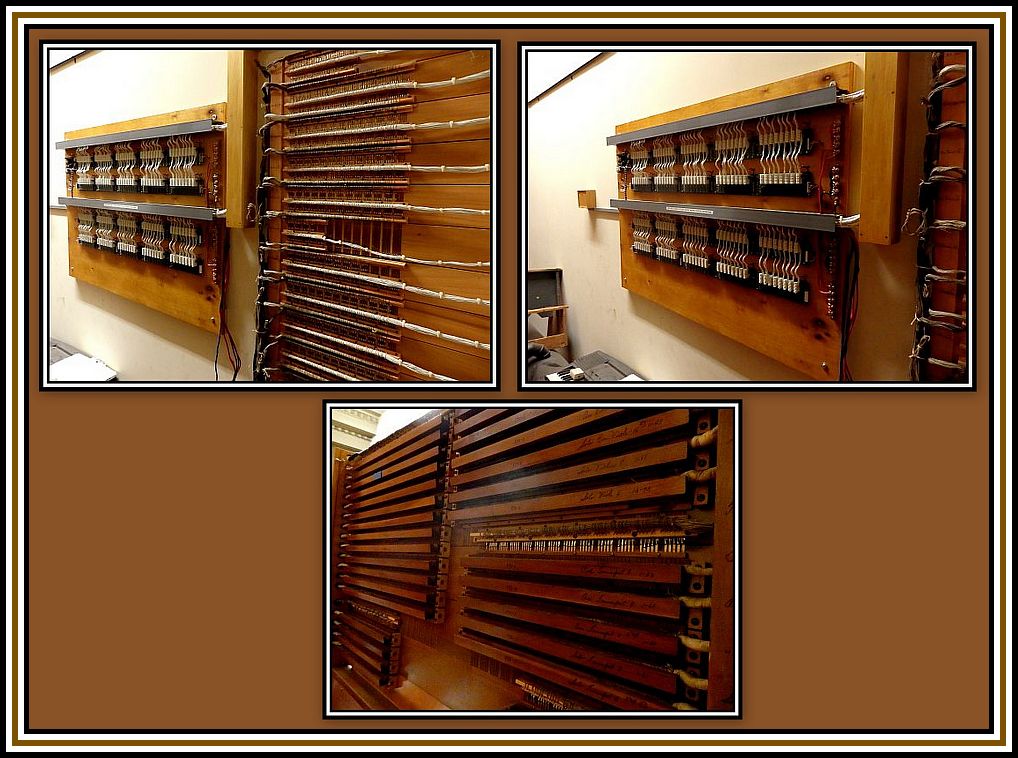
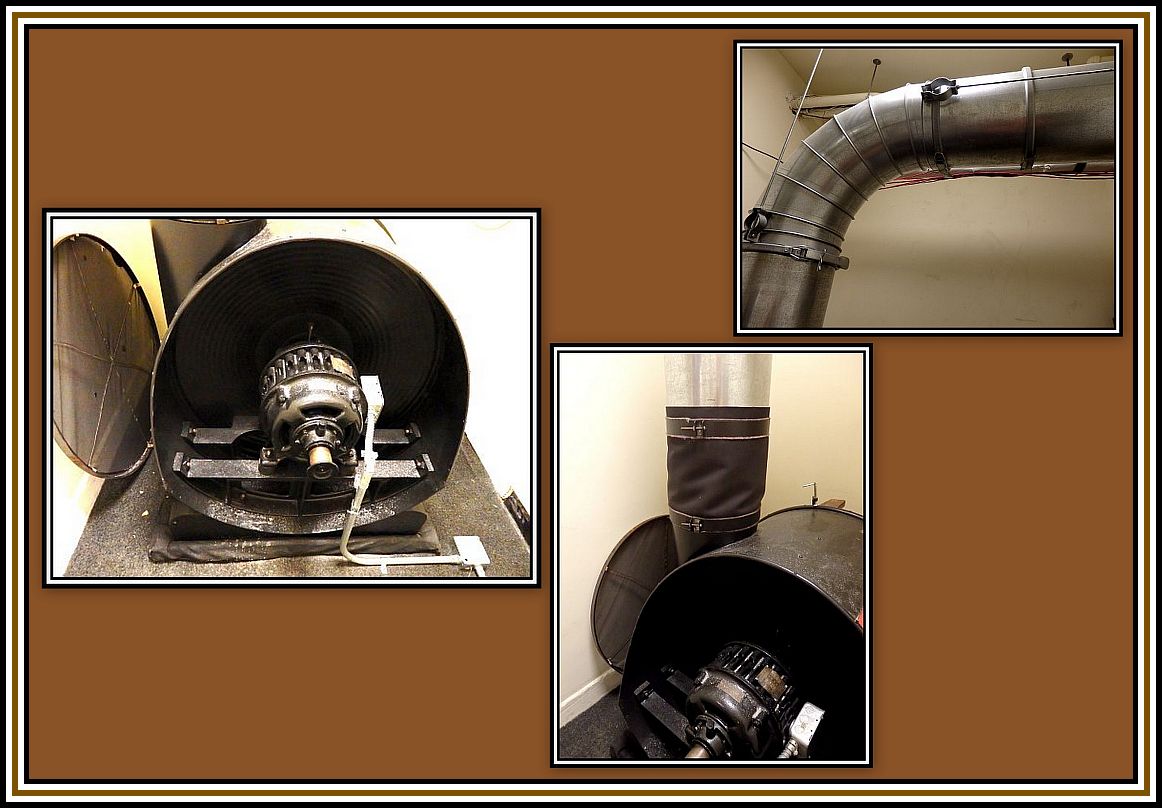
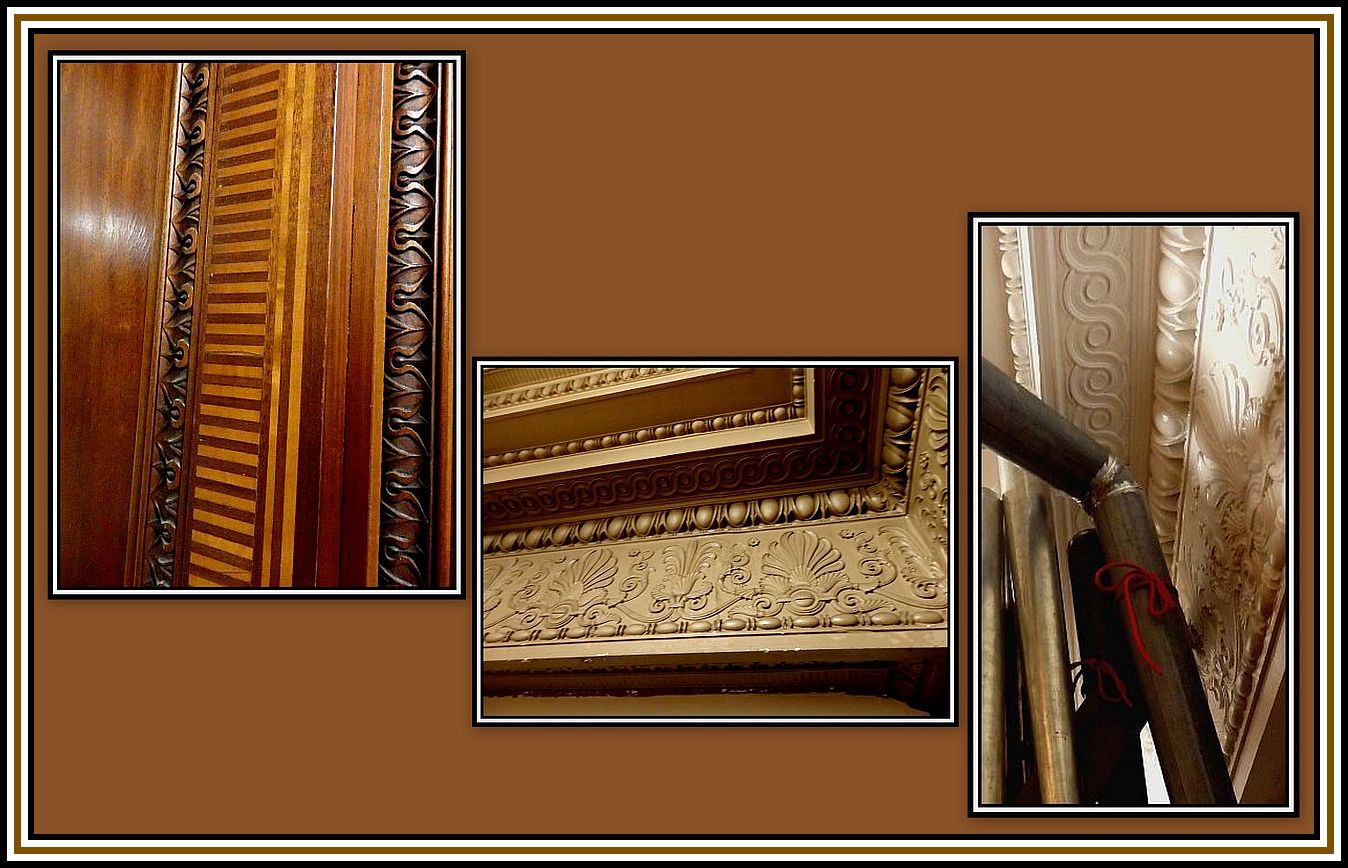
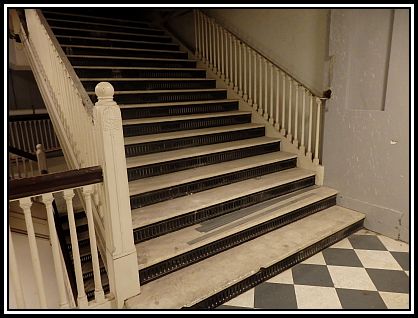
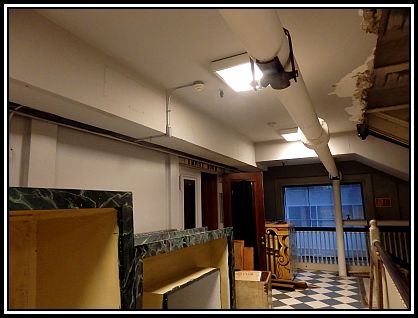
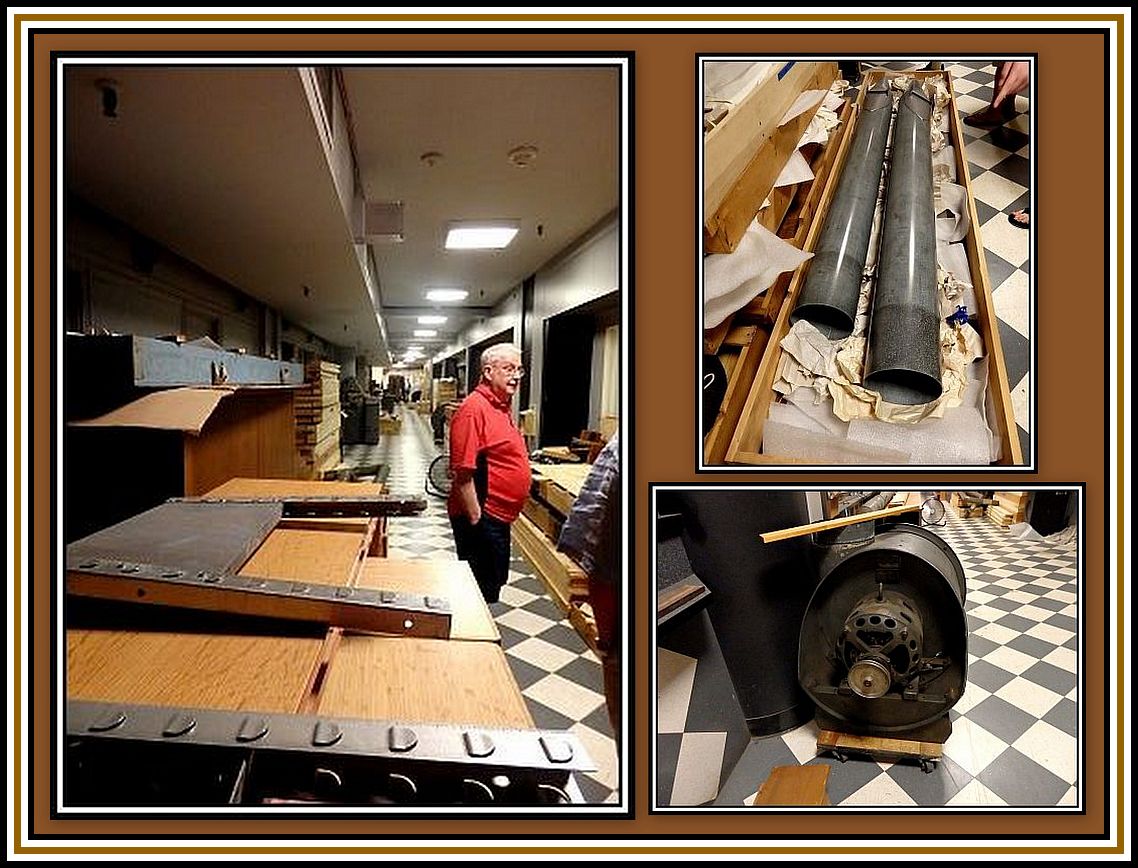
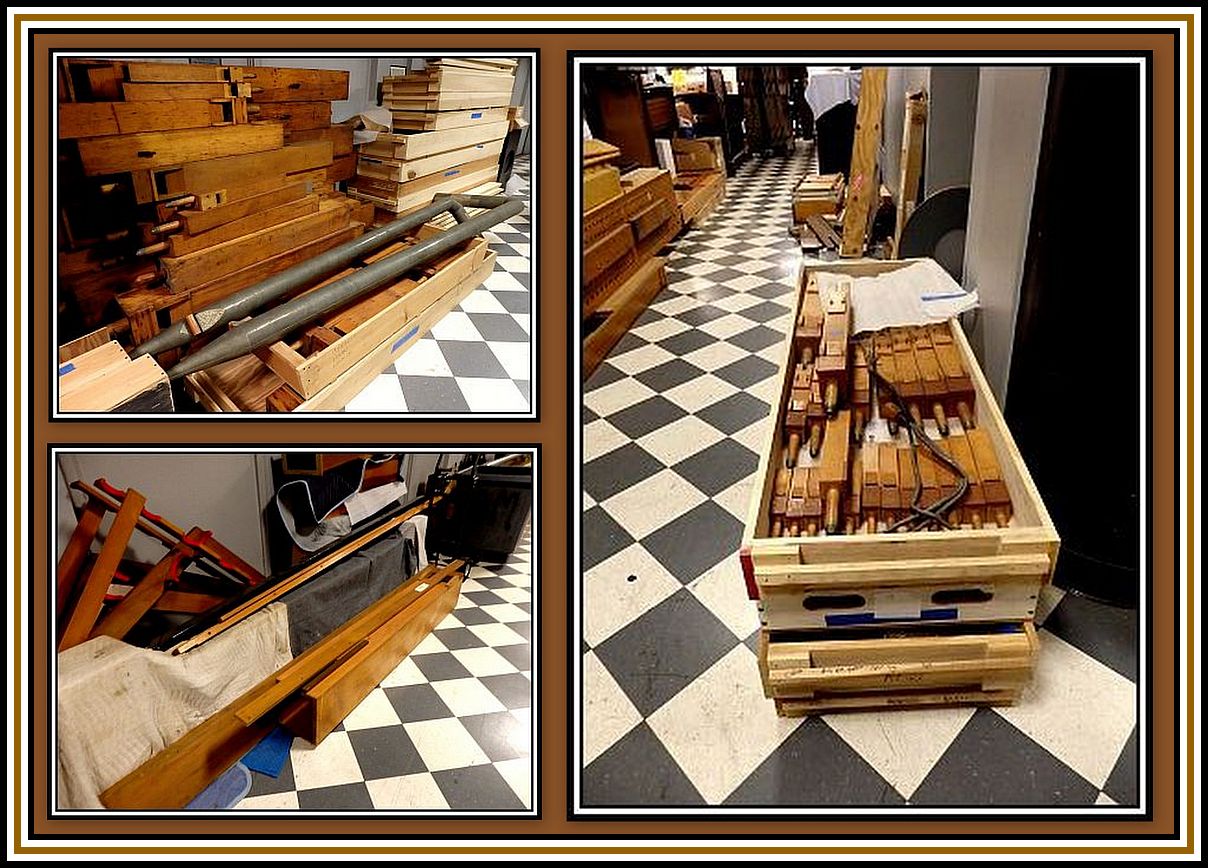
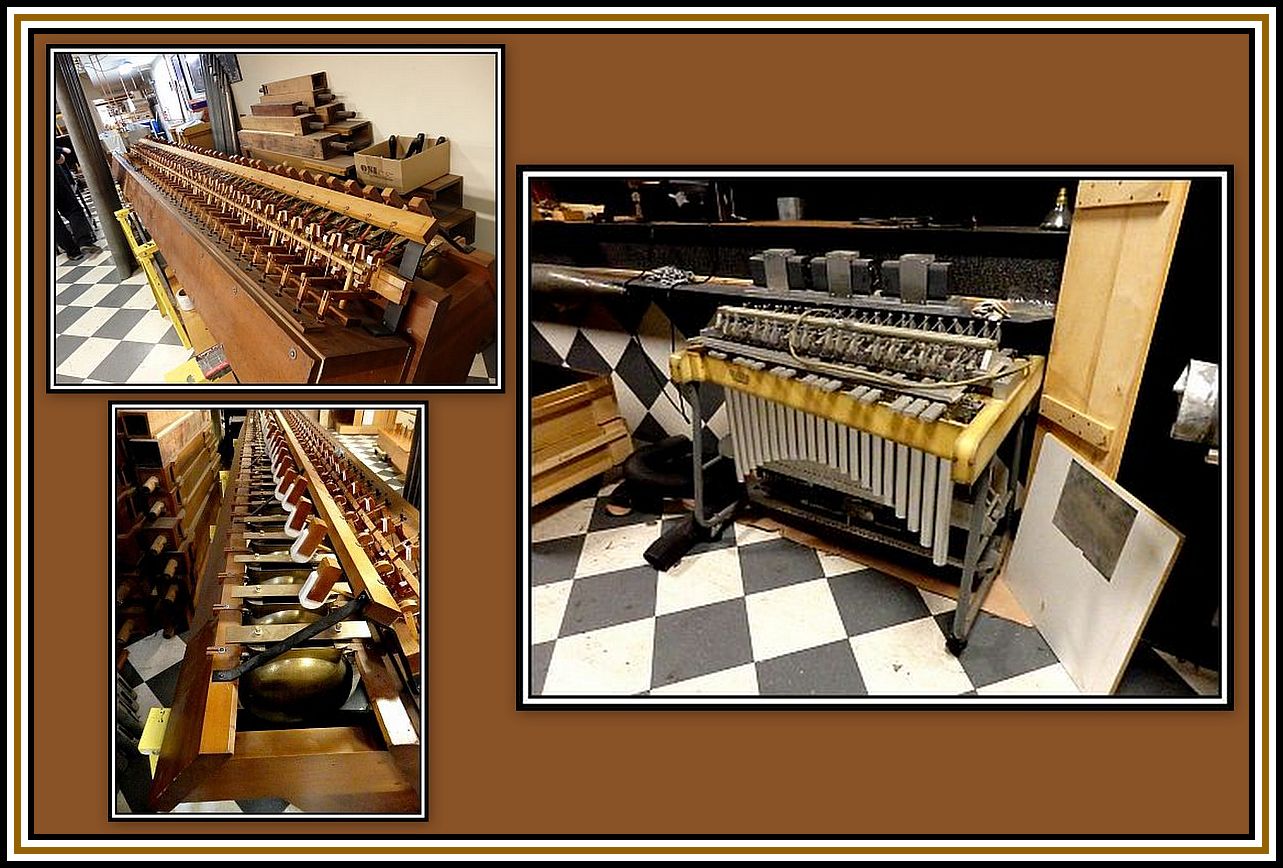
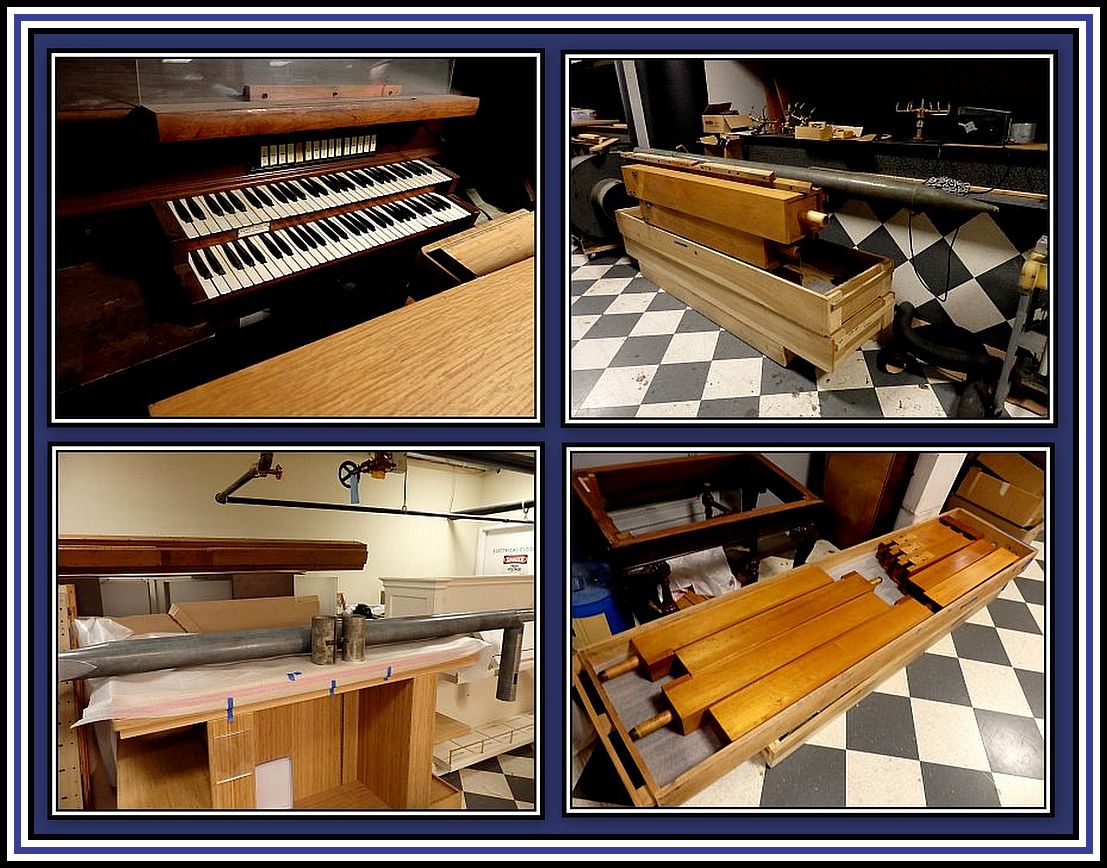
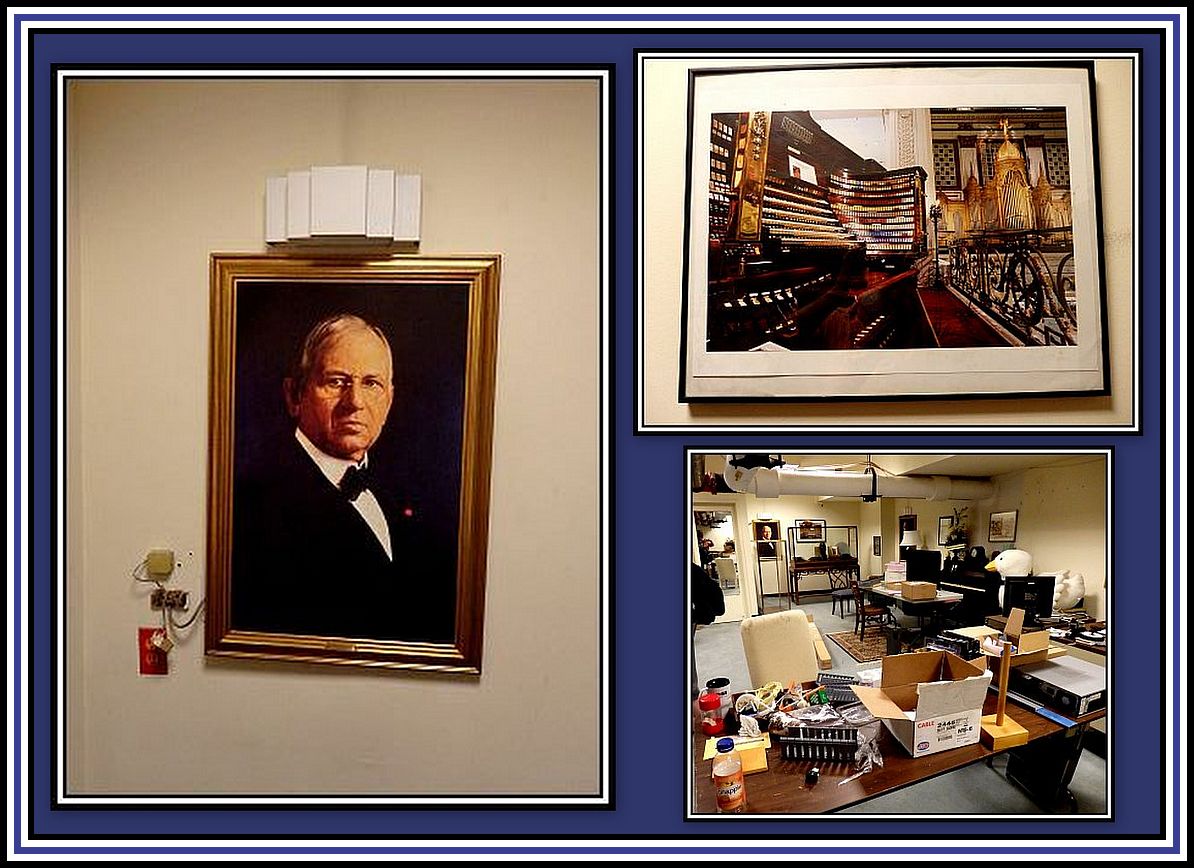
I take it back, not a wonderful job…. absolutely fantastic one 🙂
If you have not looked over the Friend’s website keep in mind that they are a number of excellent CDs and DVDs of the organ. Just recently we completed a DVD featuring a complete three hour tour of the Wanamaker Organ with Curator Curt Mangel and Pipe Dreams radio host Michael Barone. We are currently working on a sonic tour of the organ, demonstrating many of the stops and ensembles. Please feel free to write me for more info and/or if you would like pictures of the string, orchestral or any other chambers please just let me know.
Evan